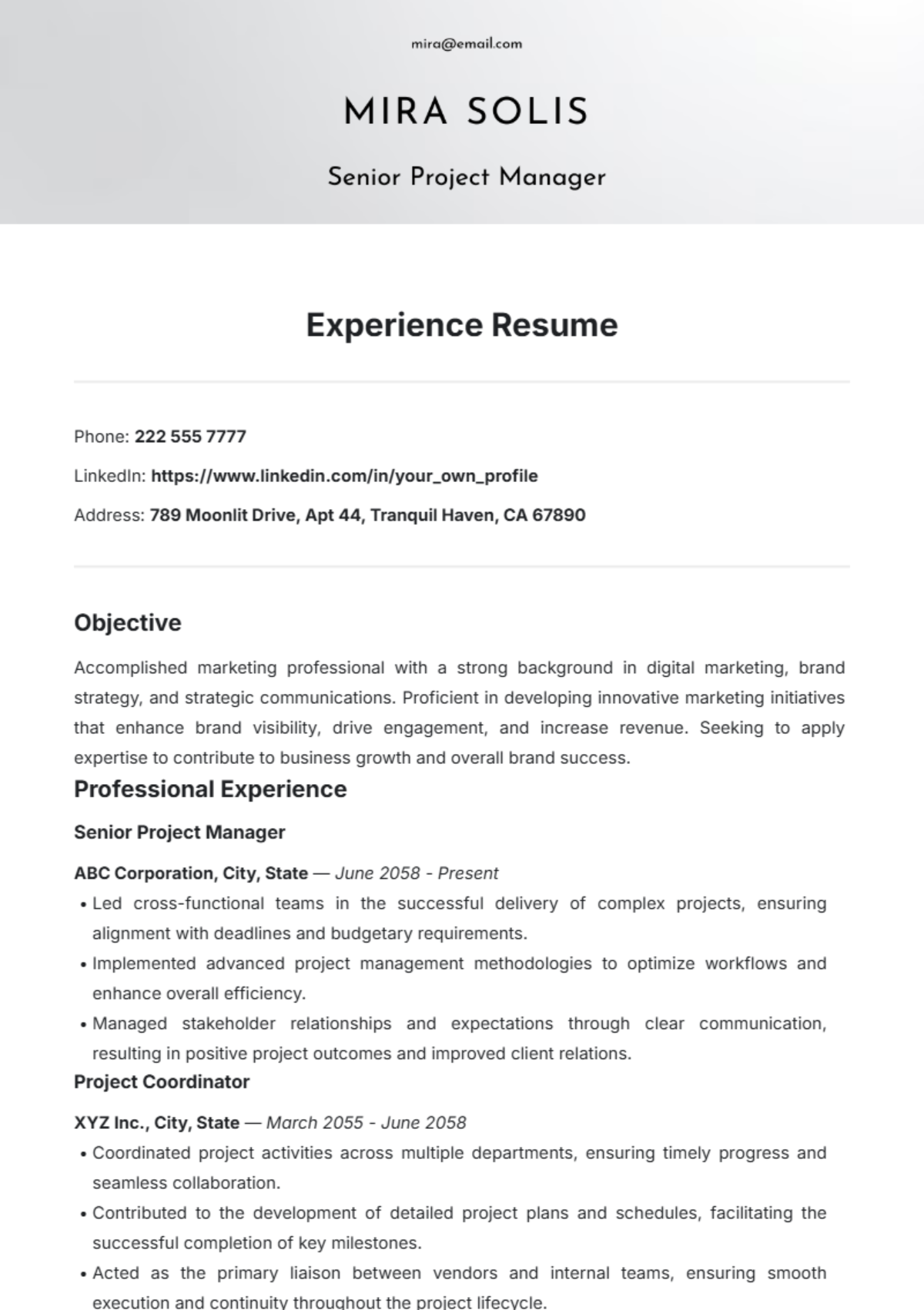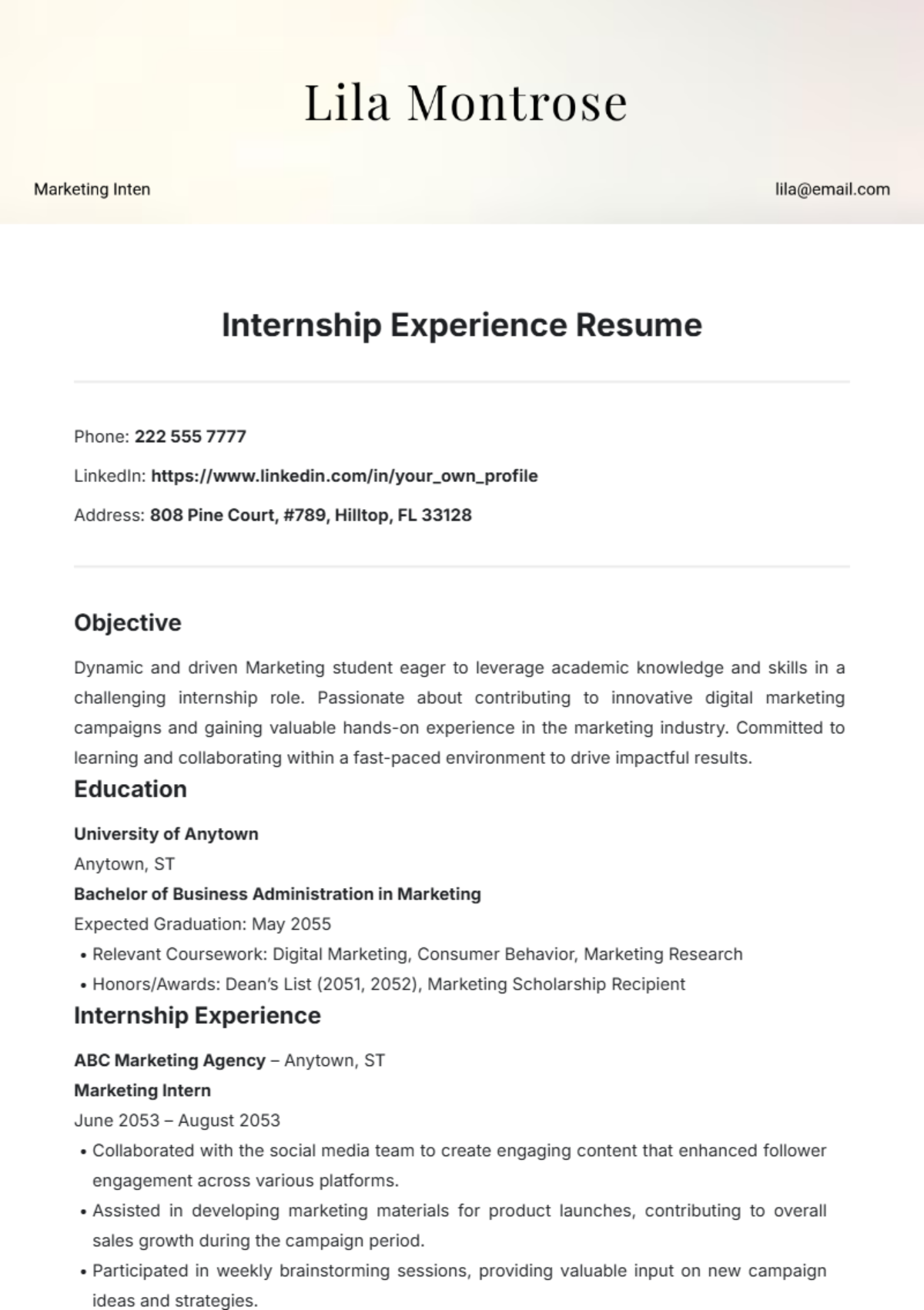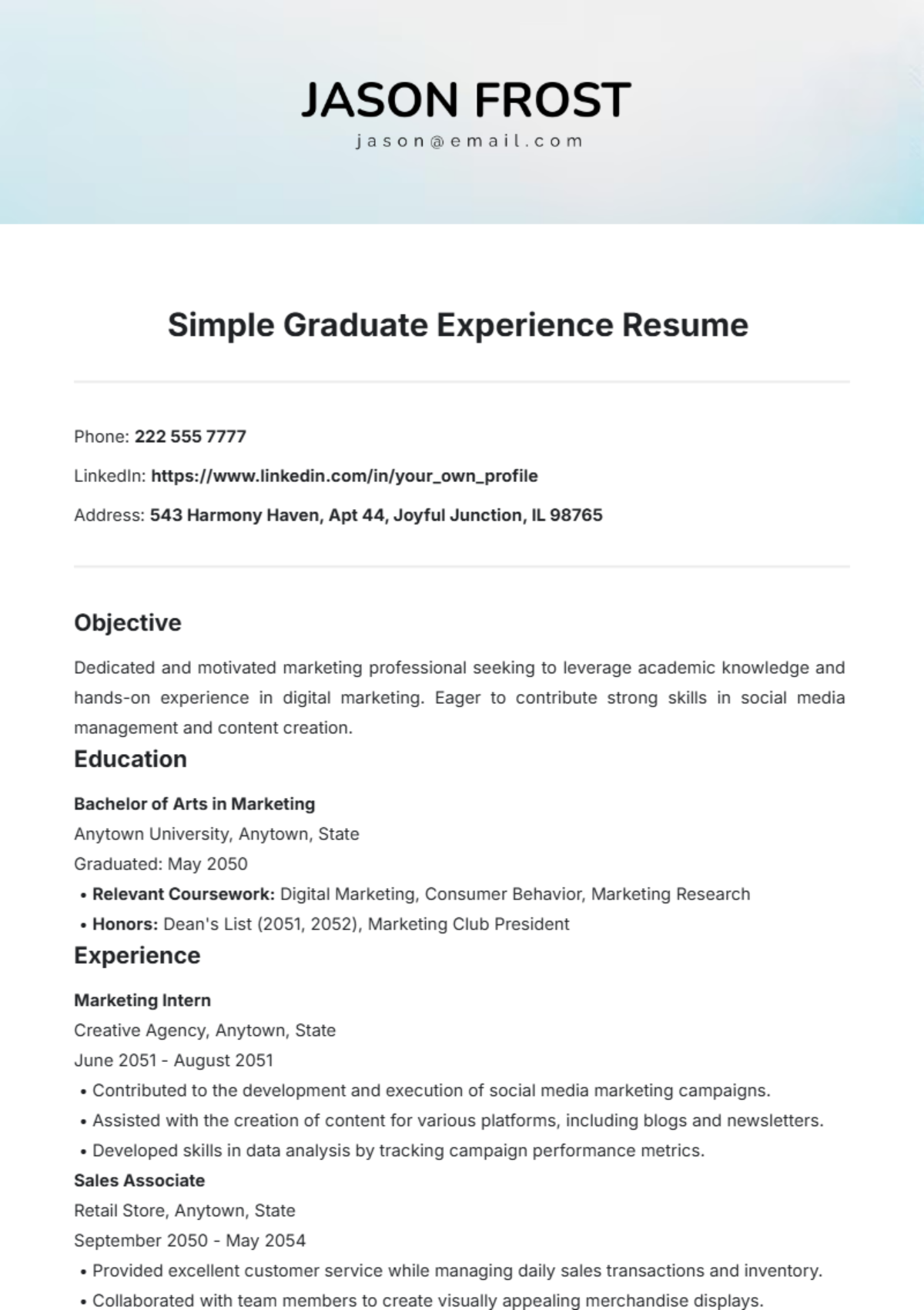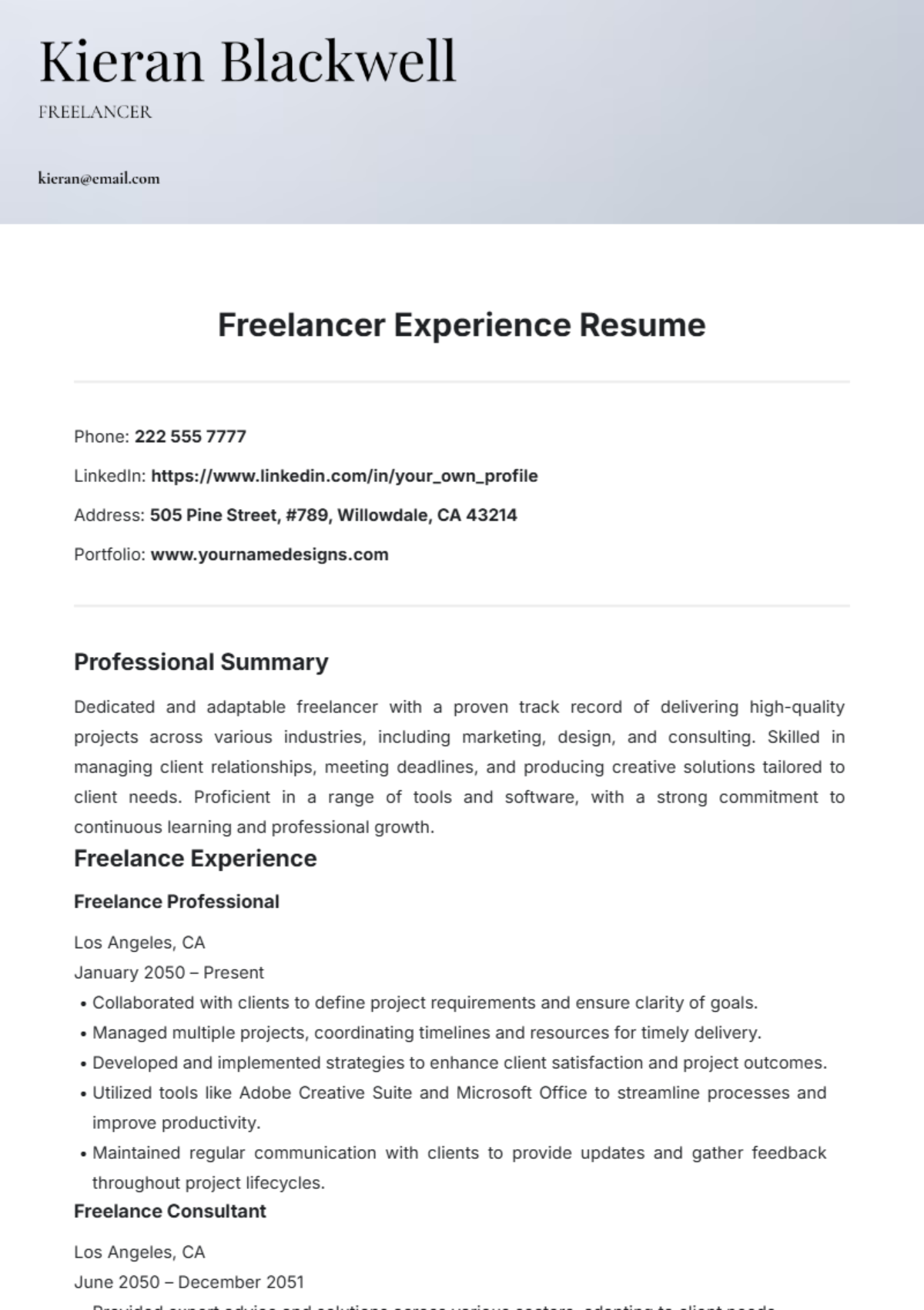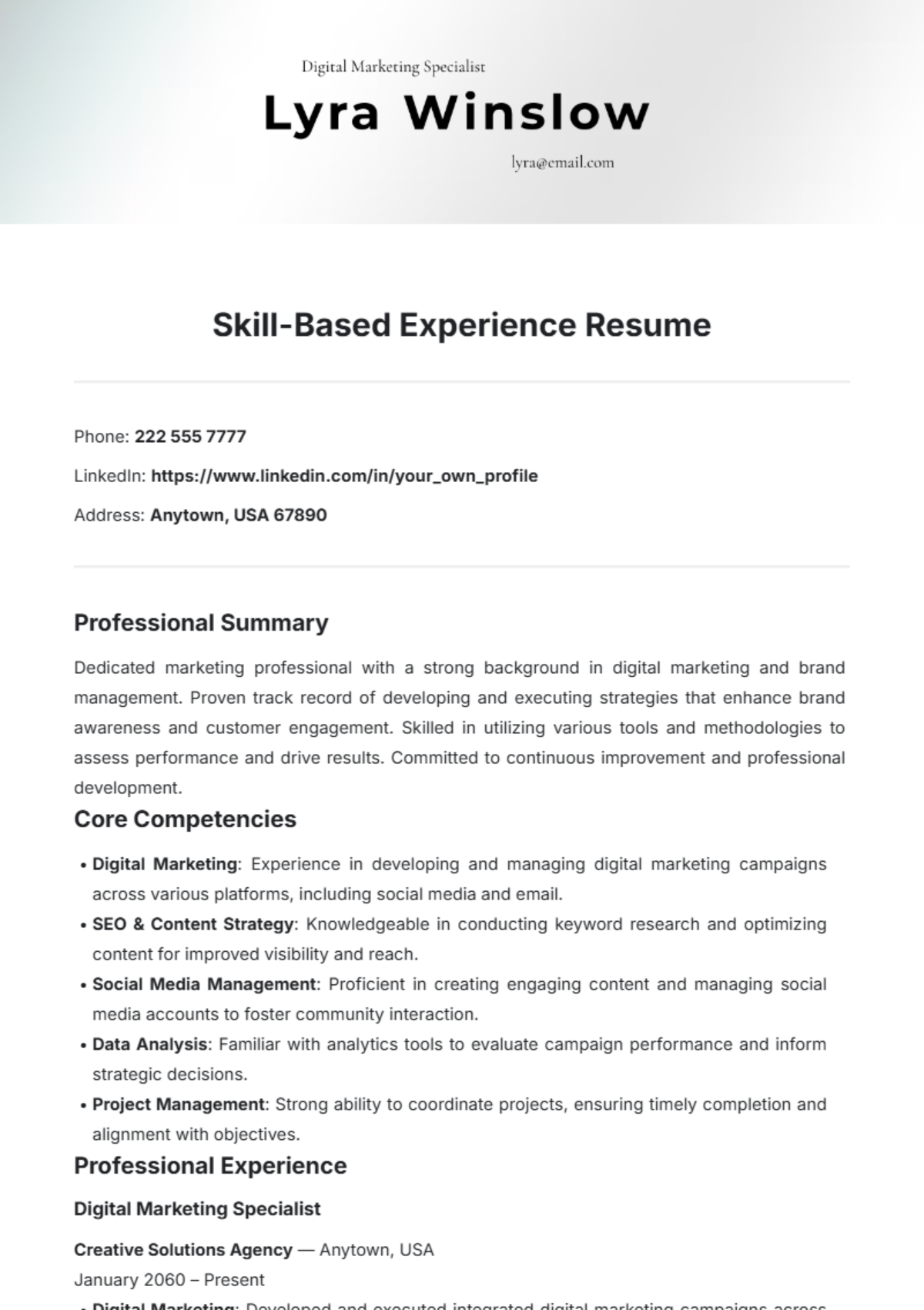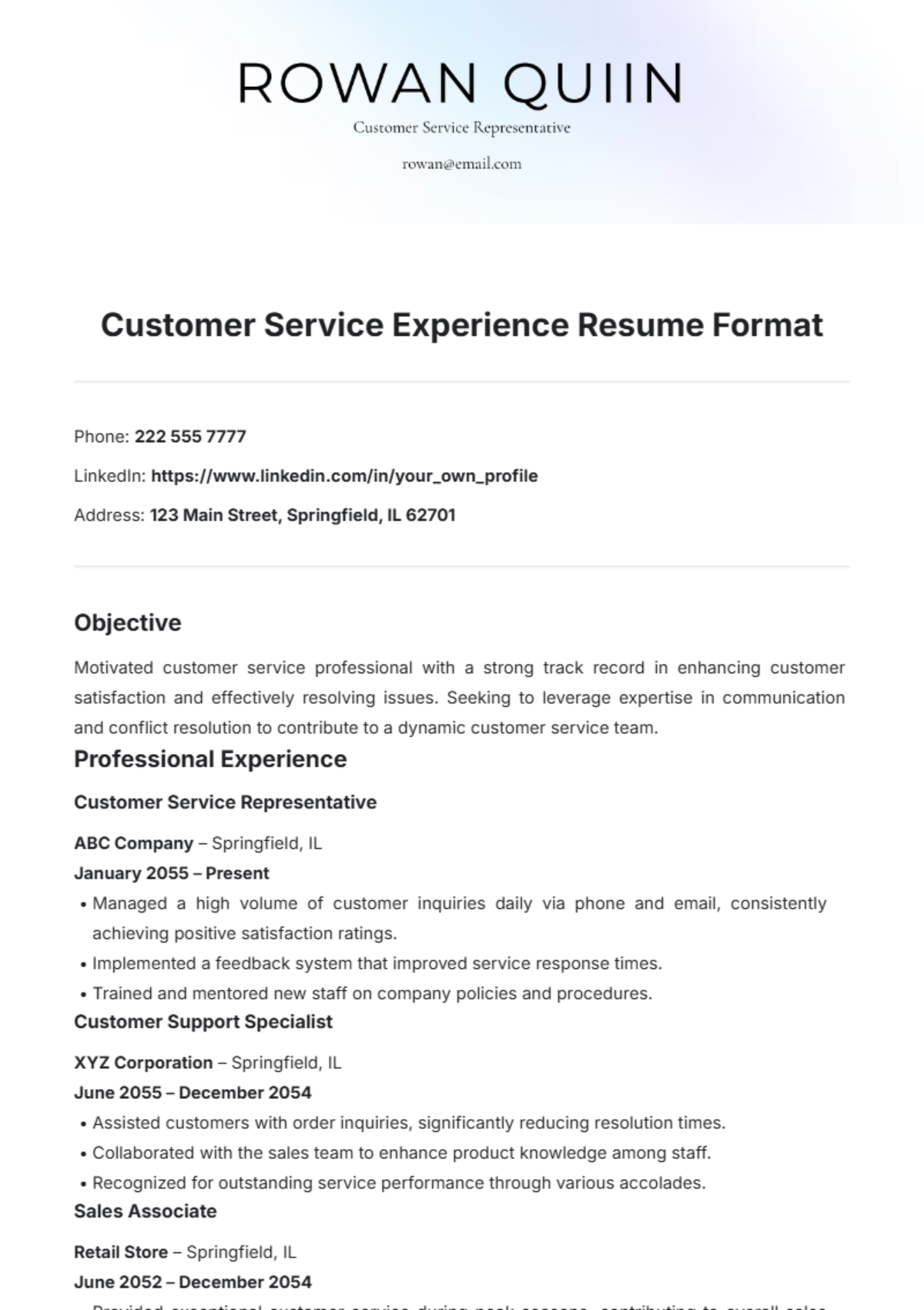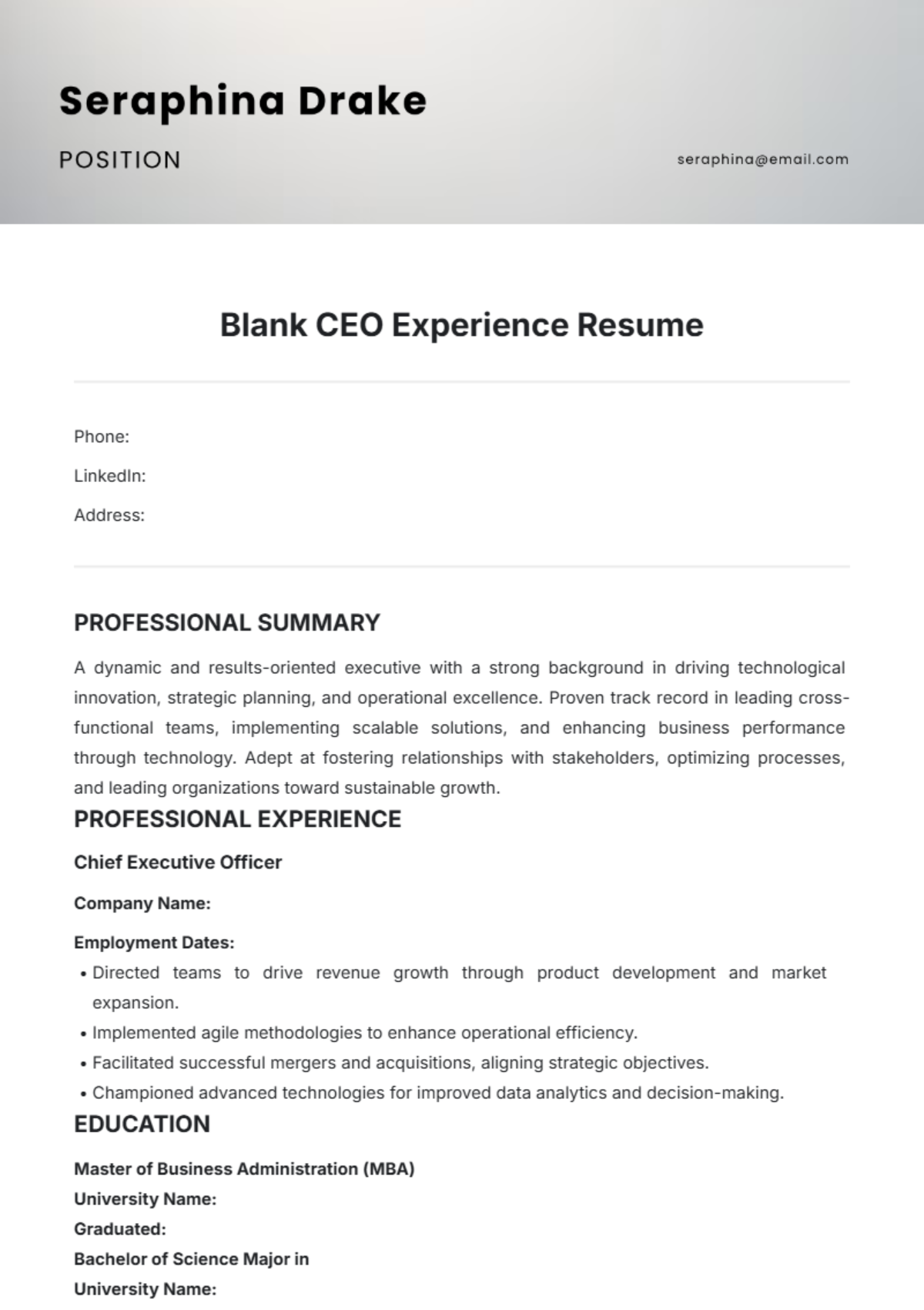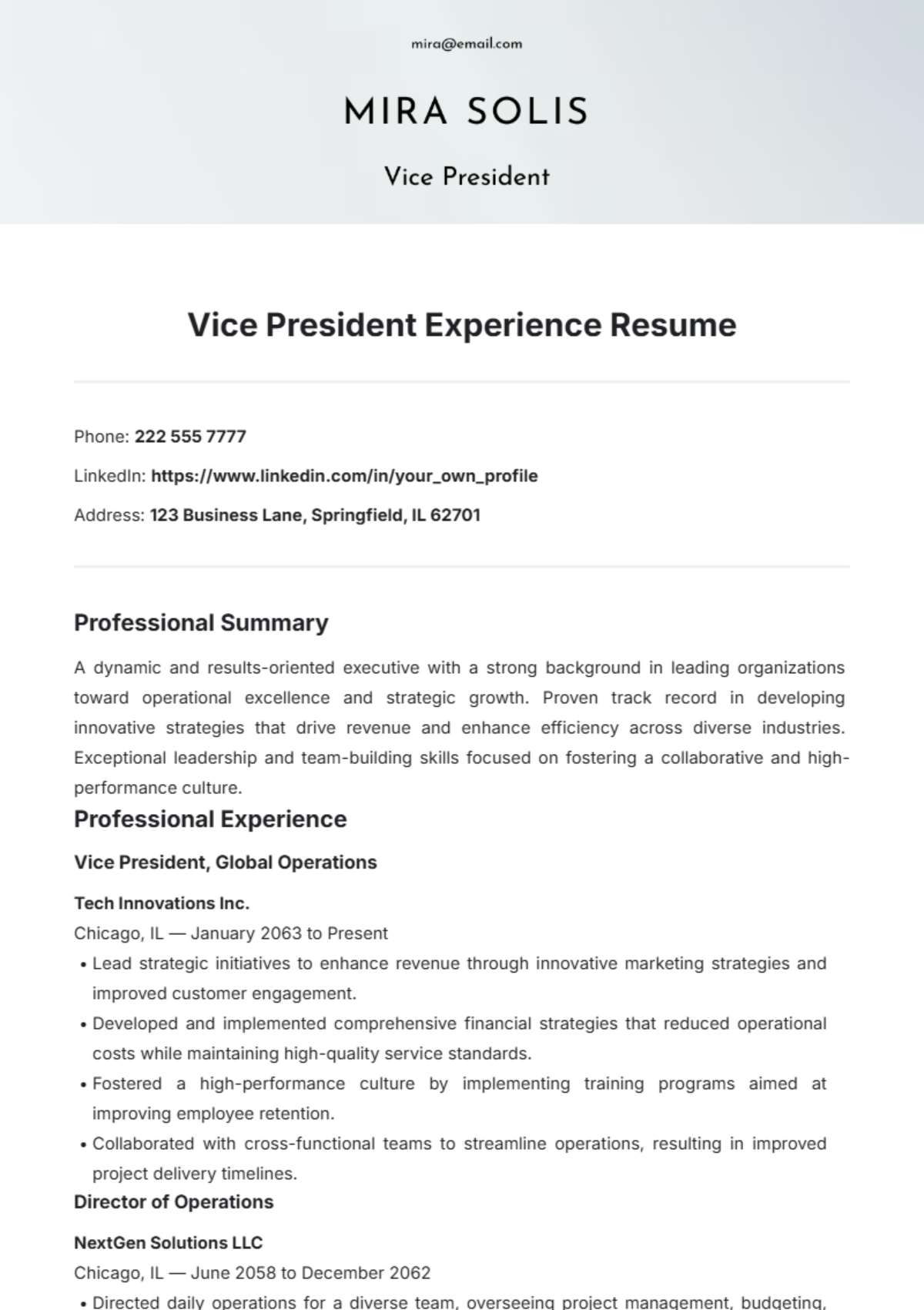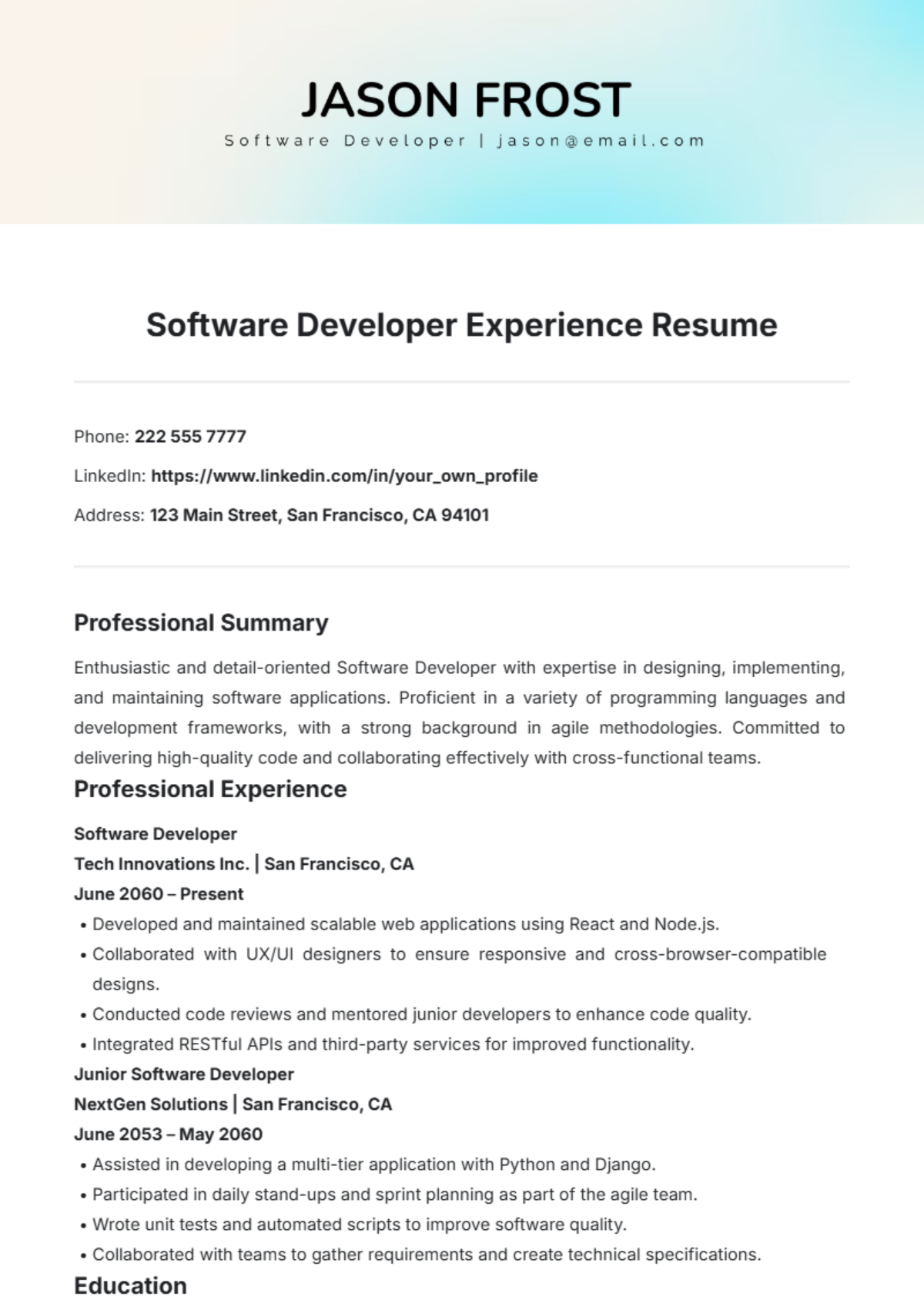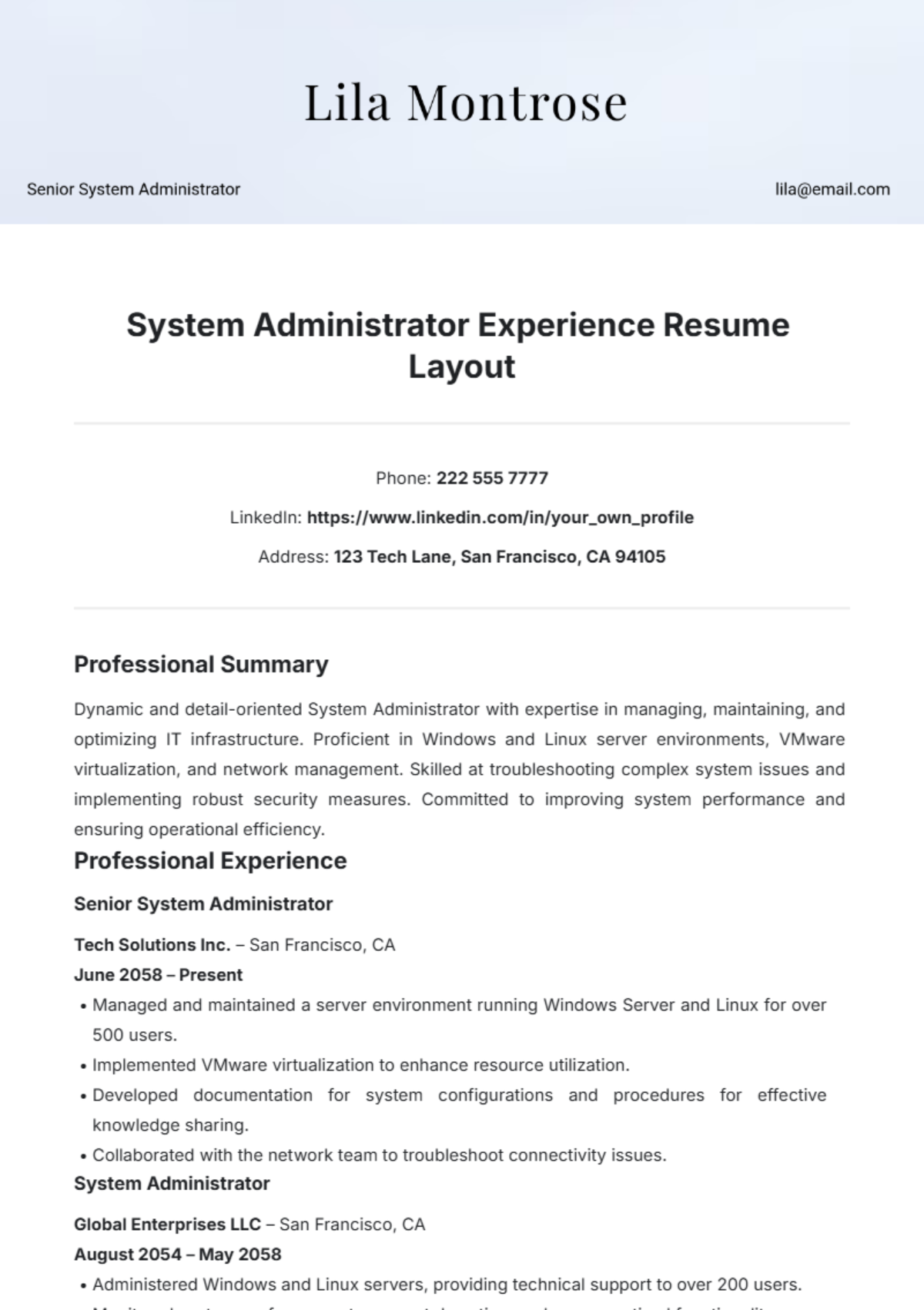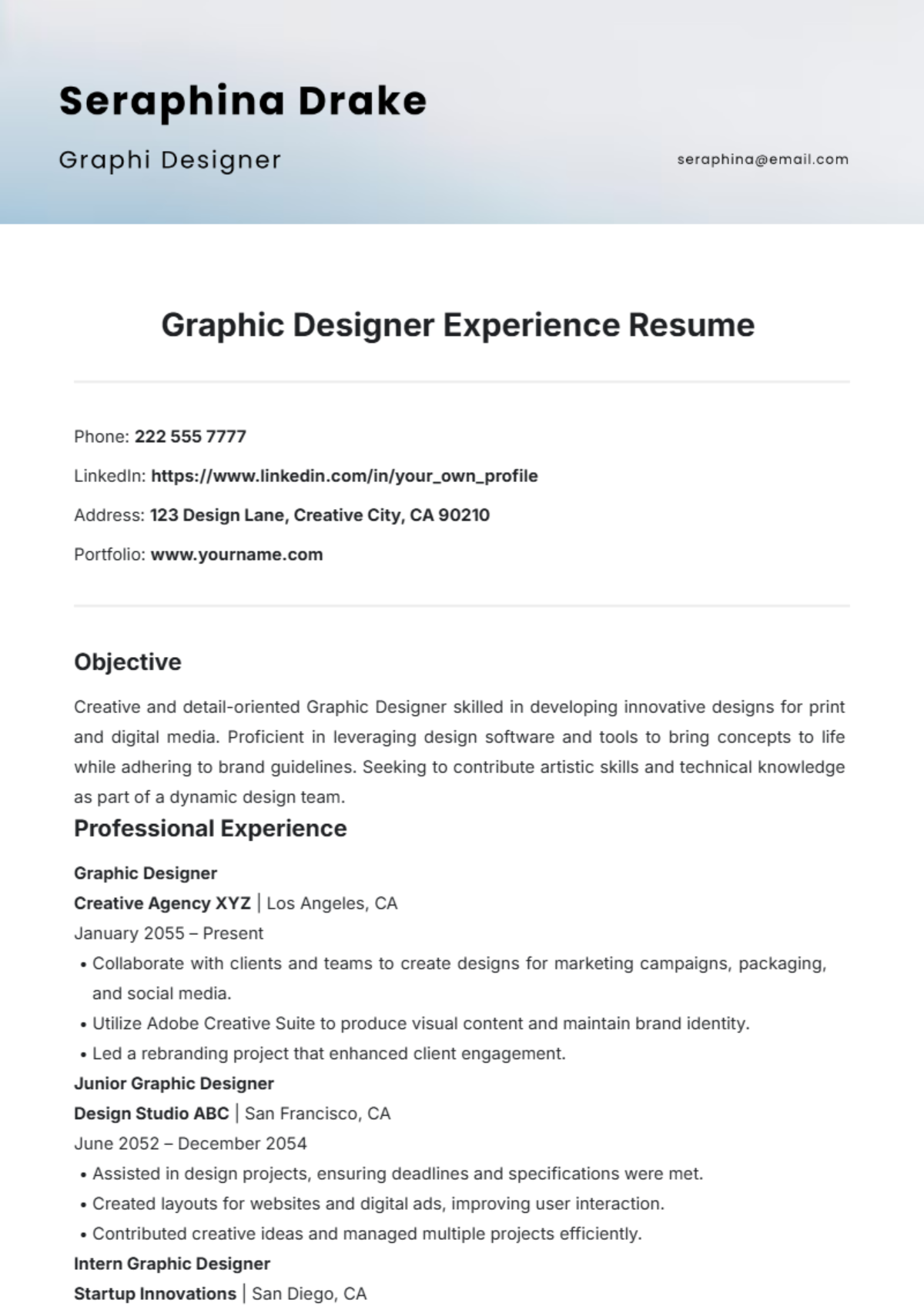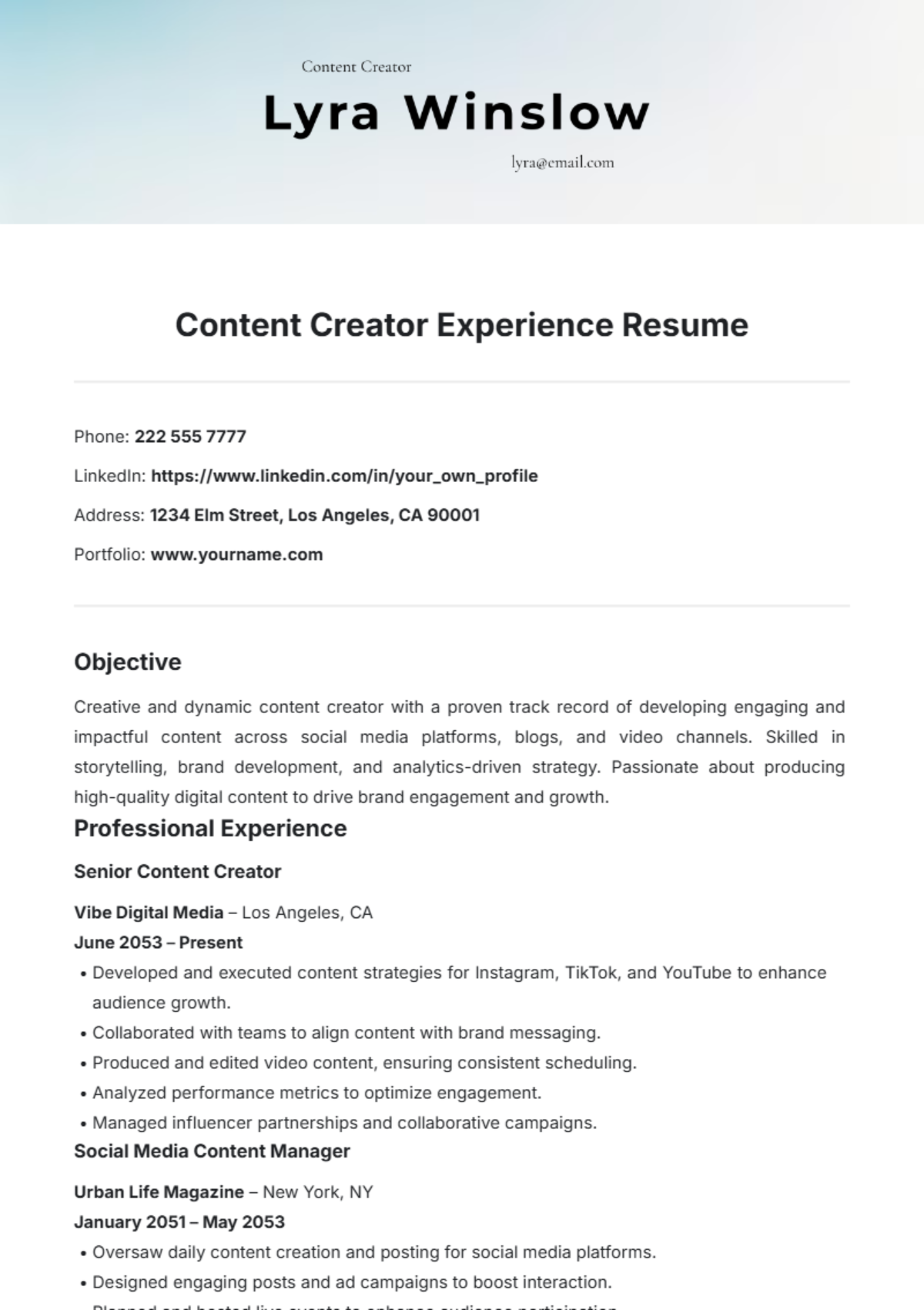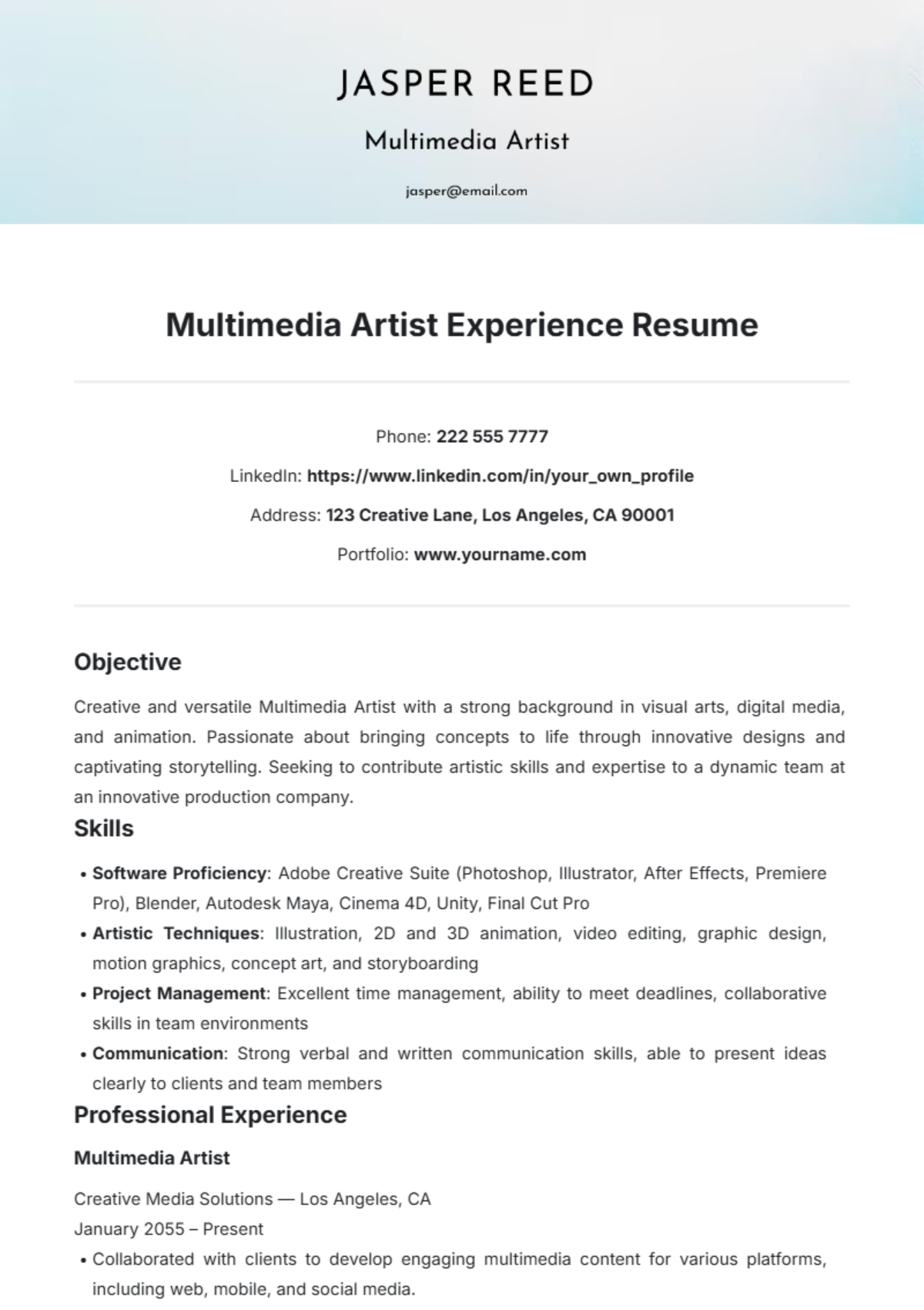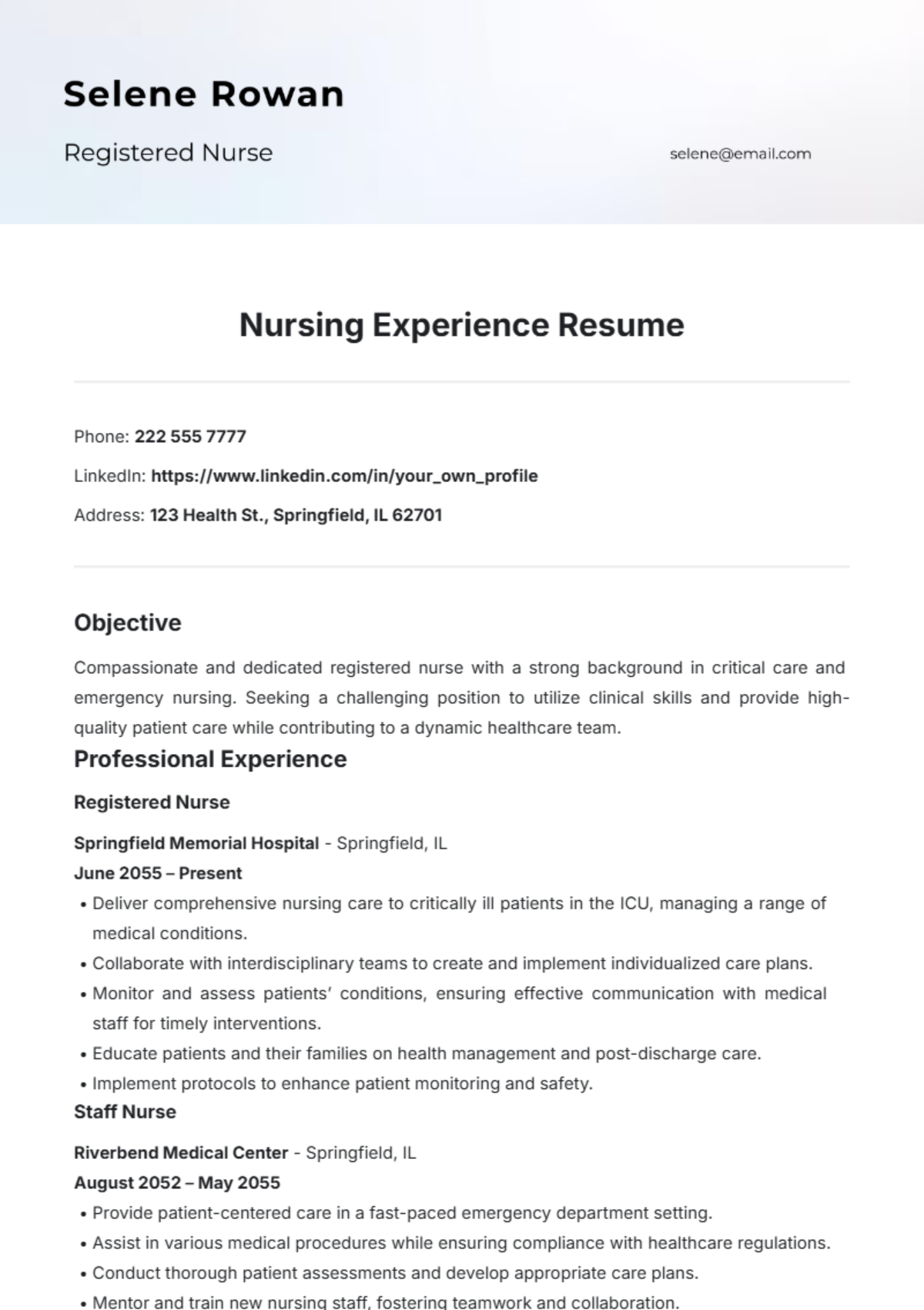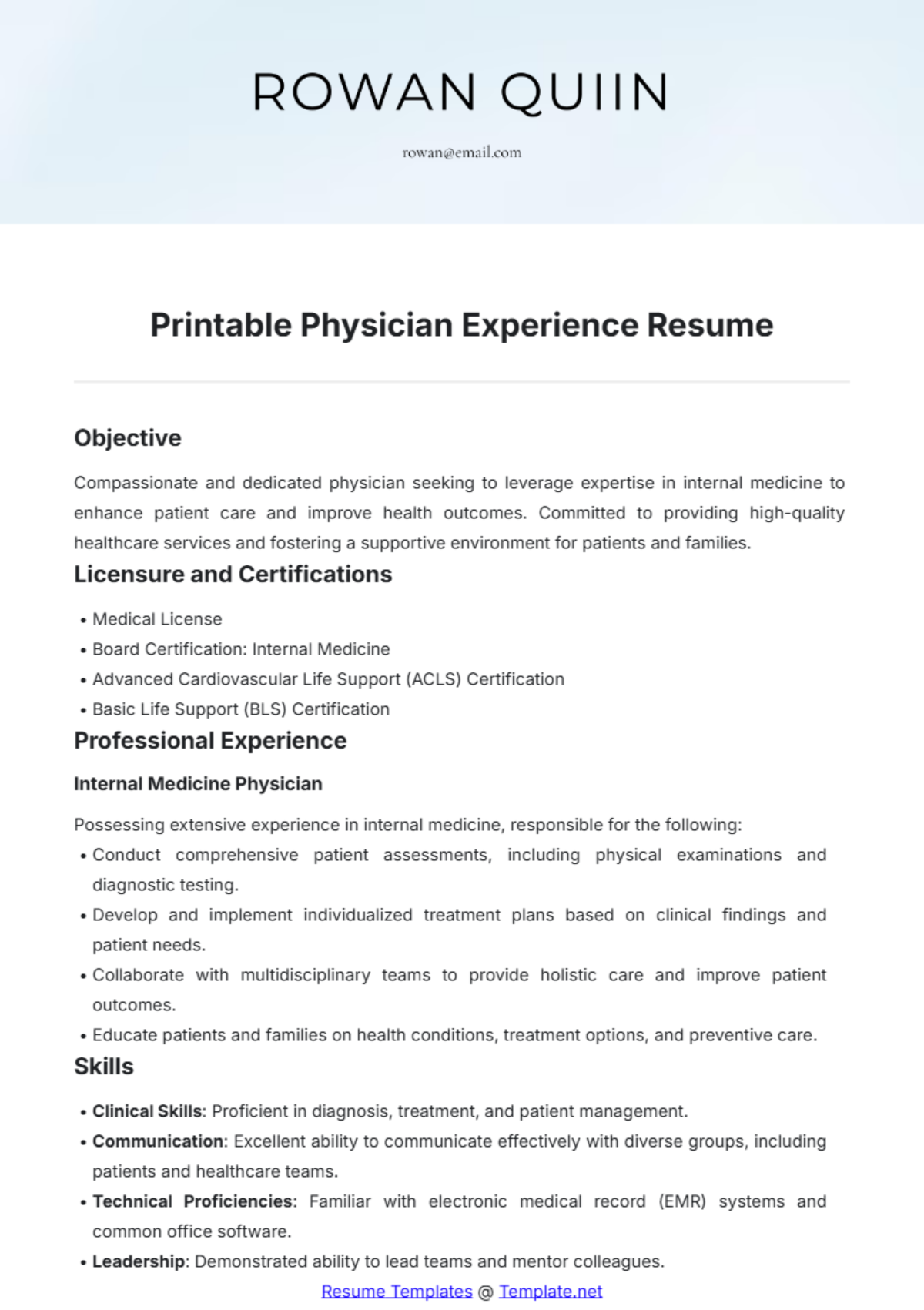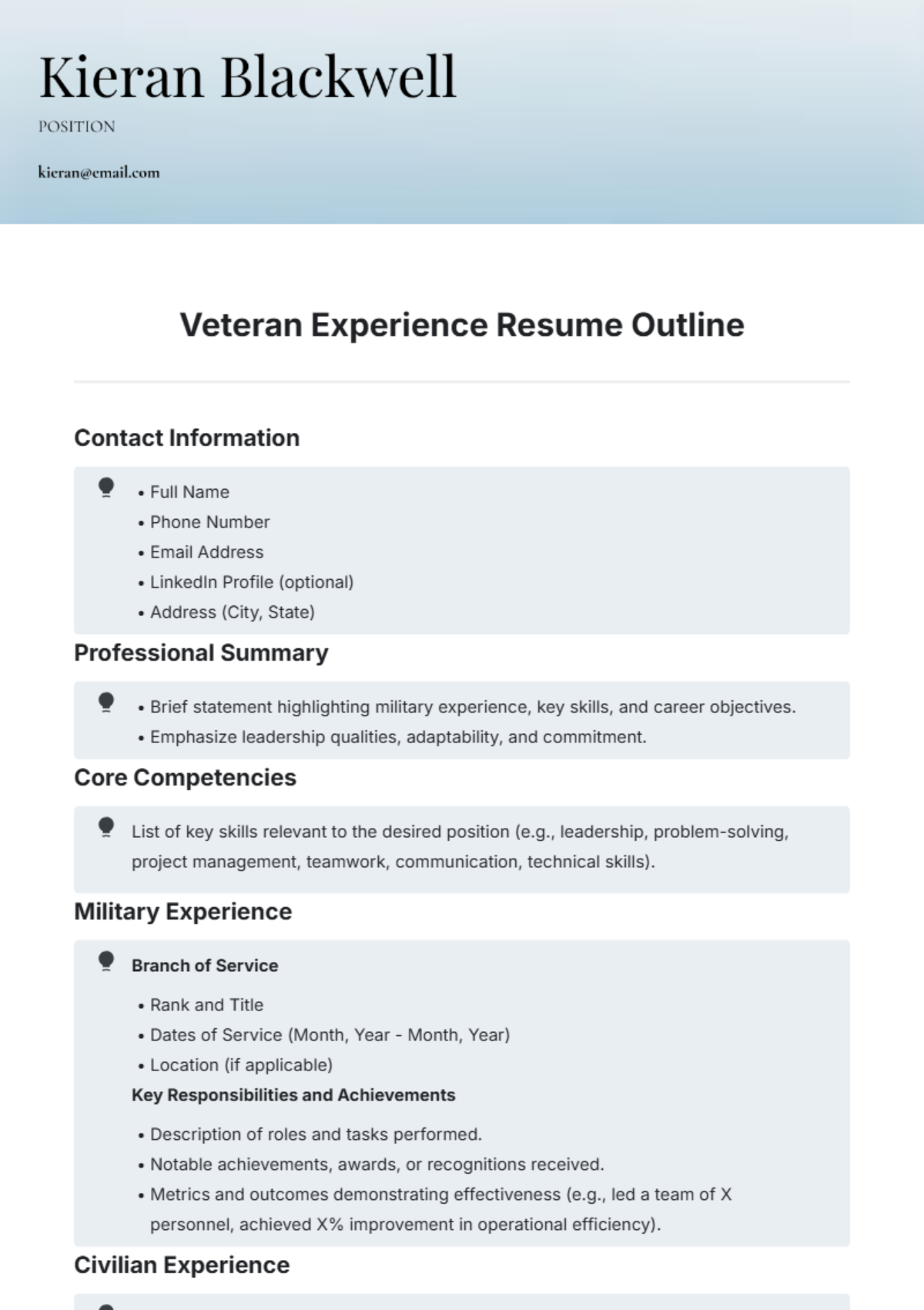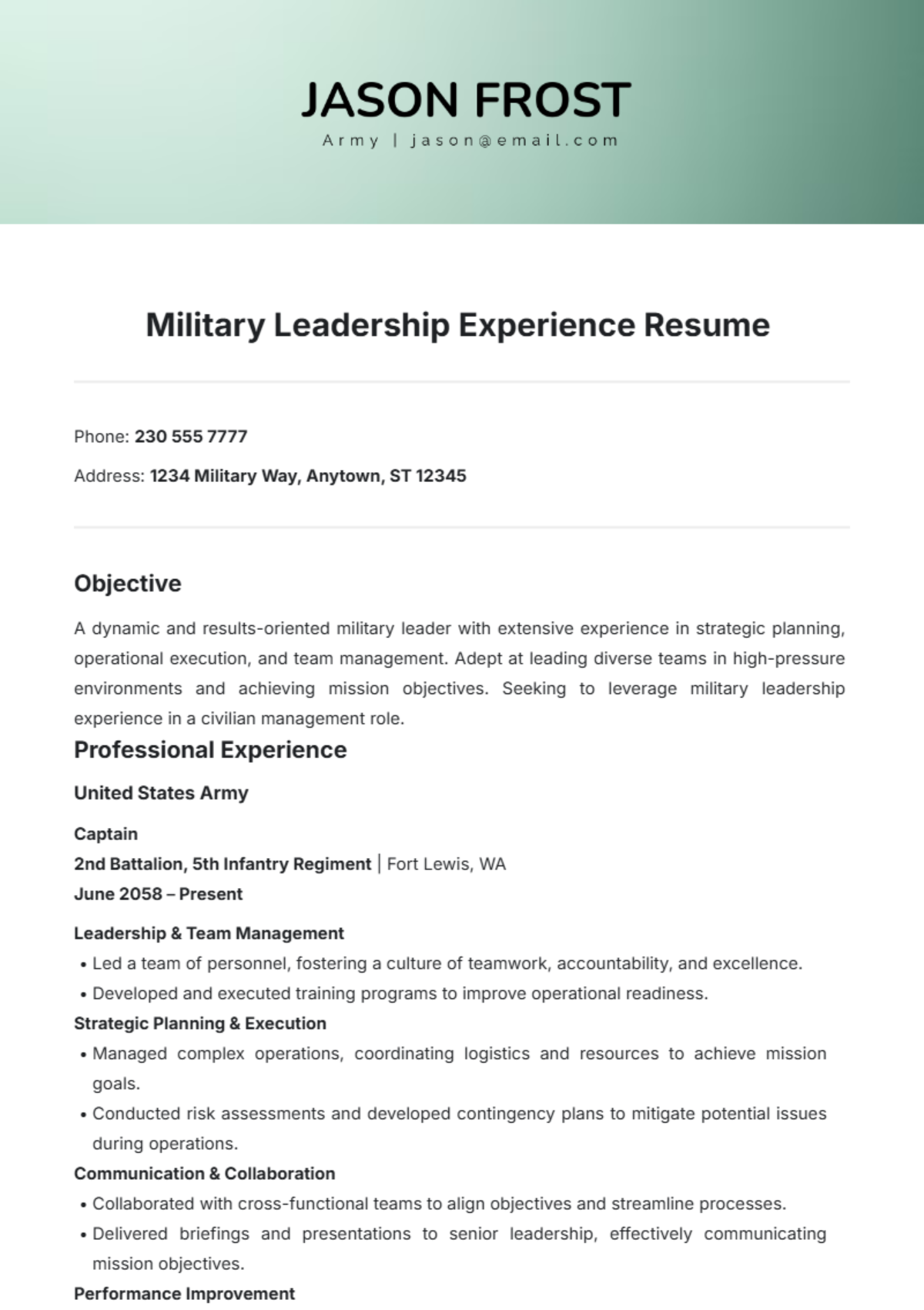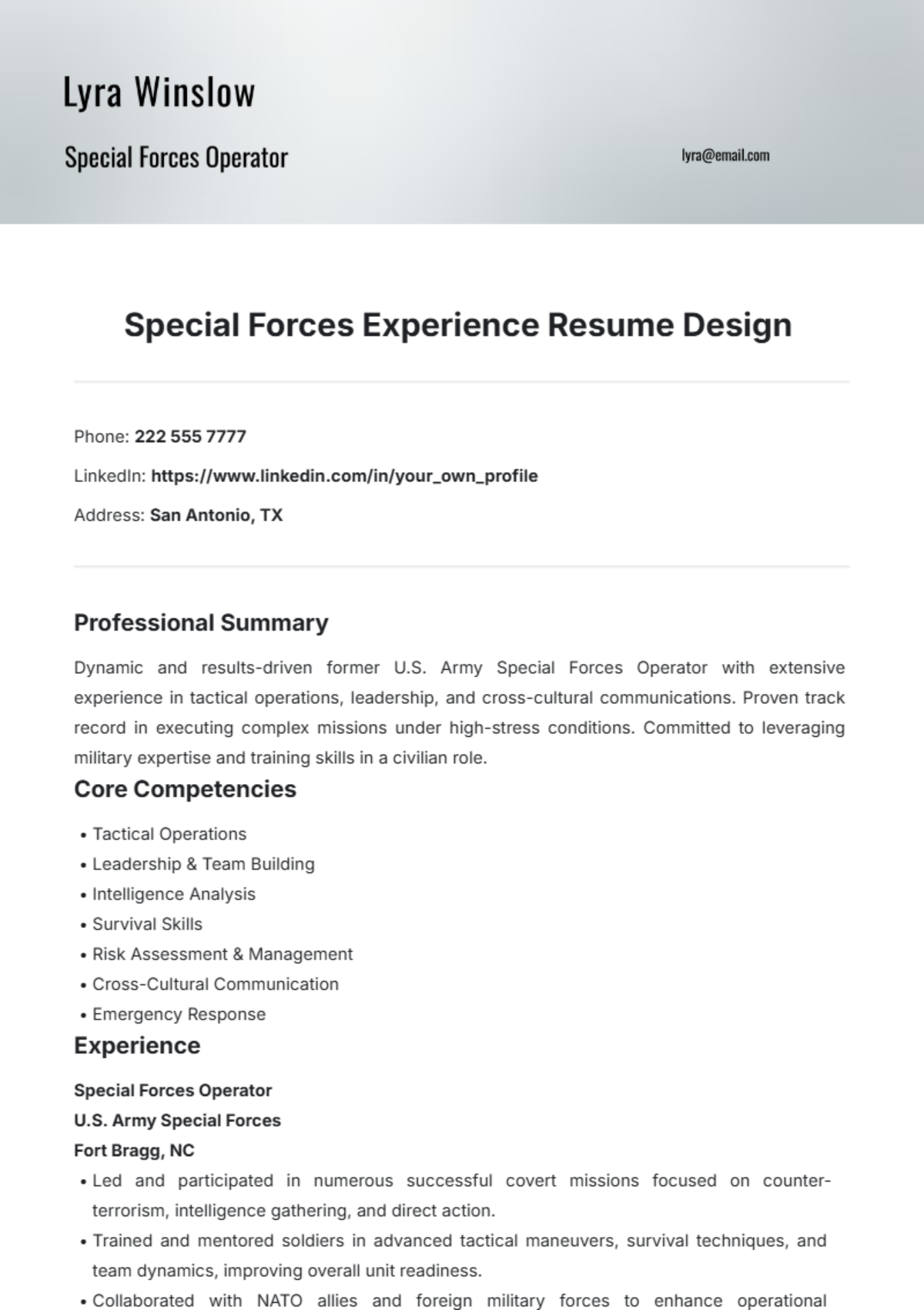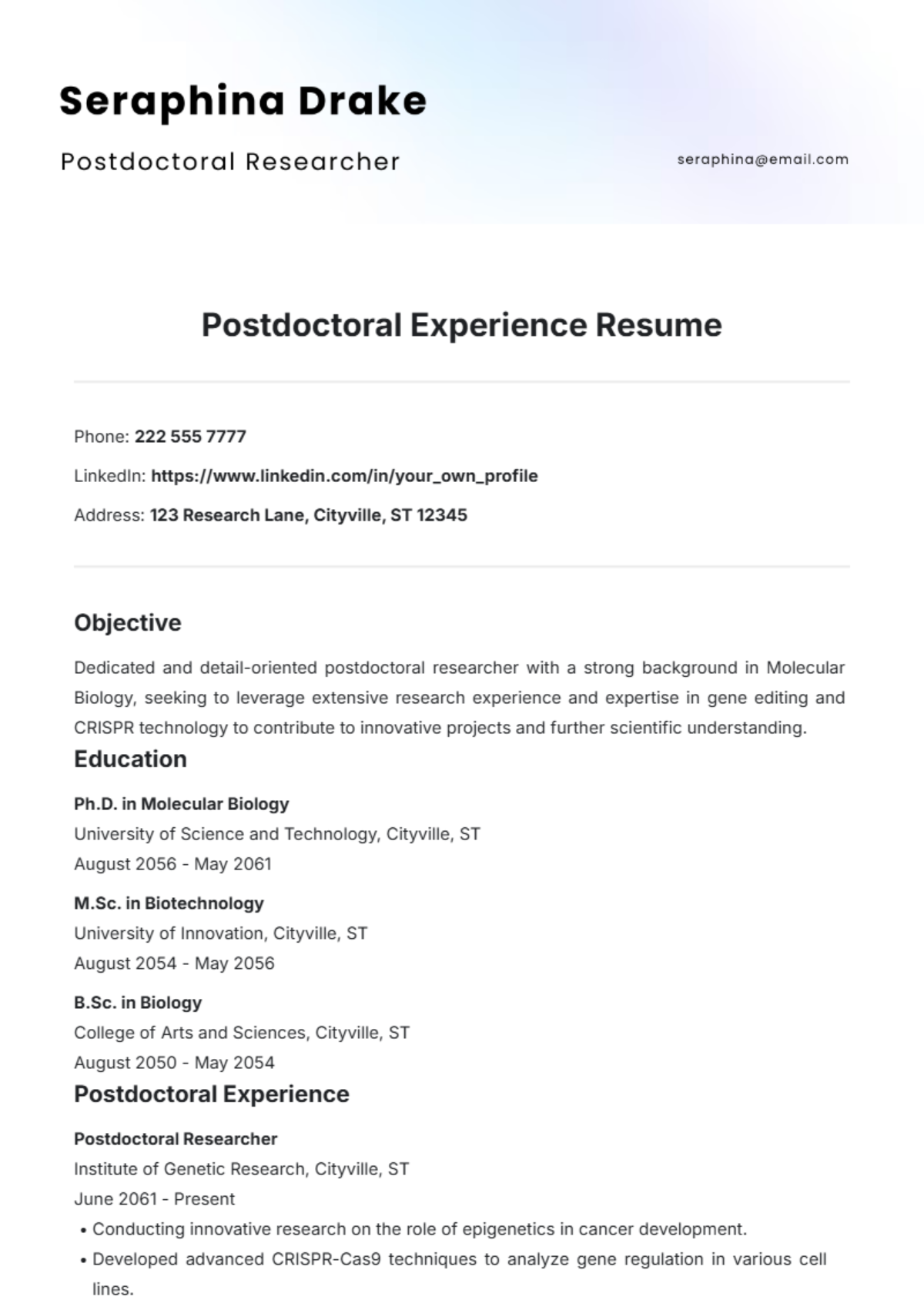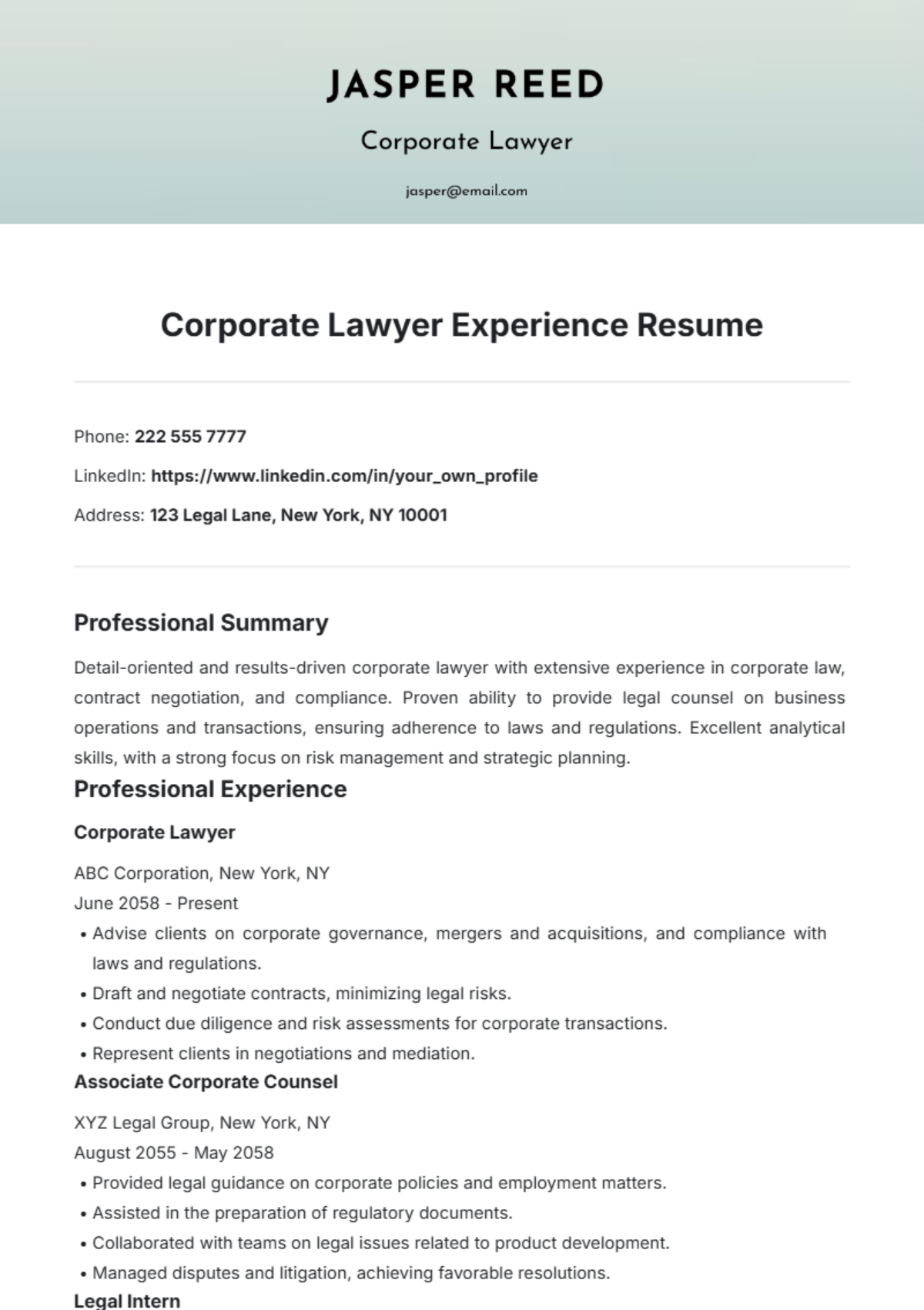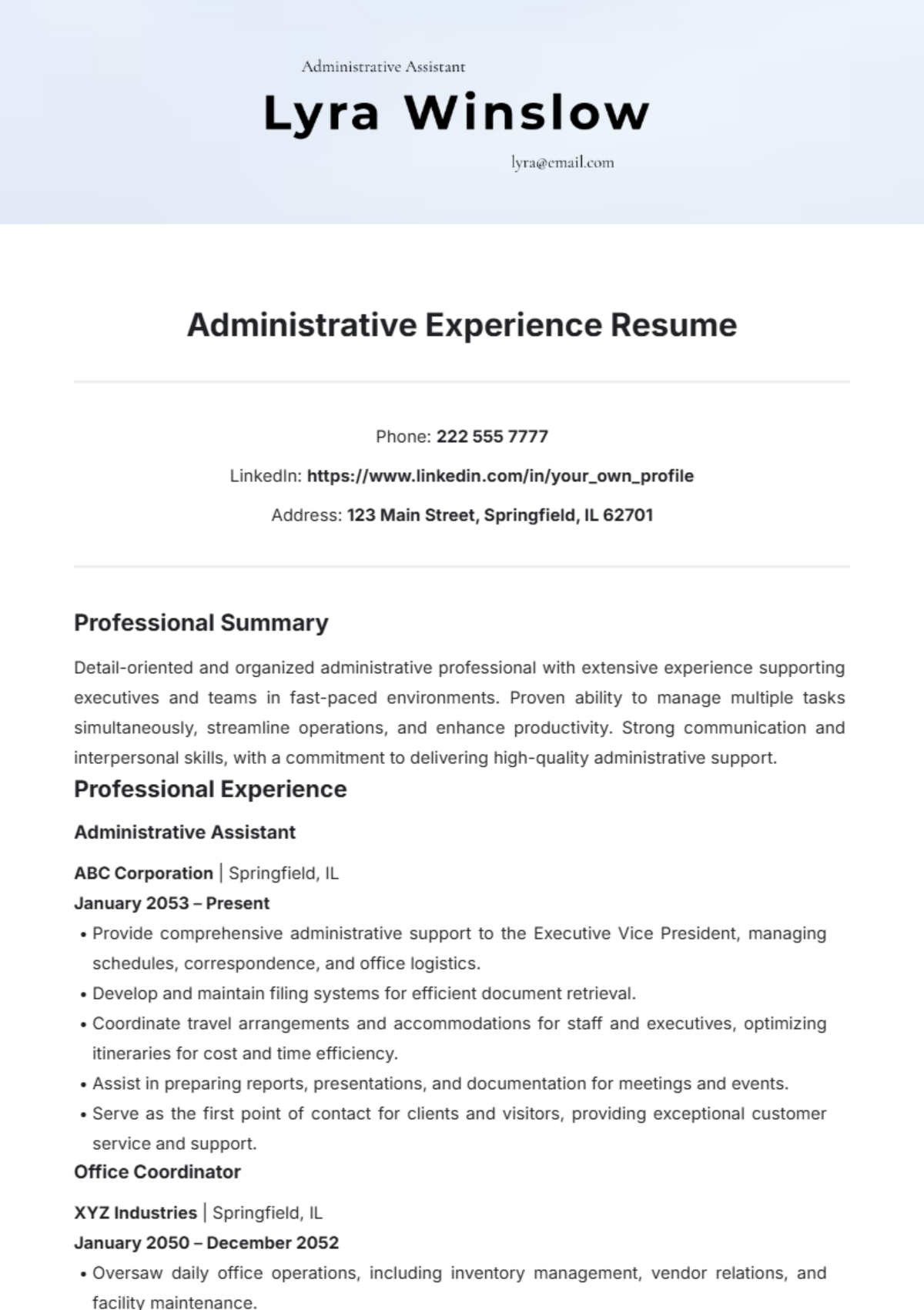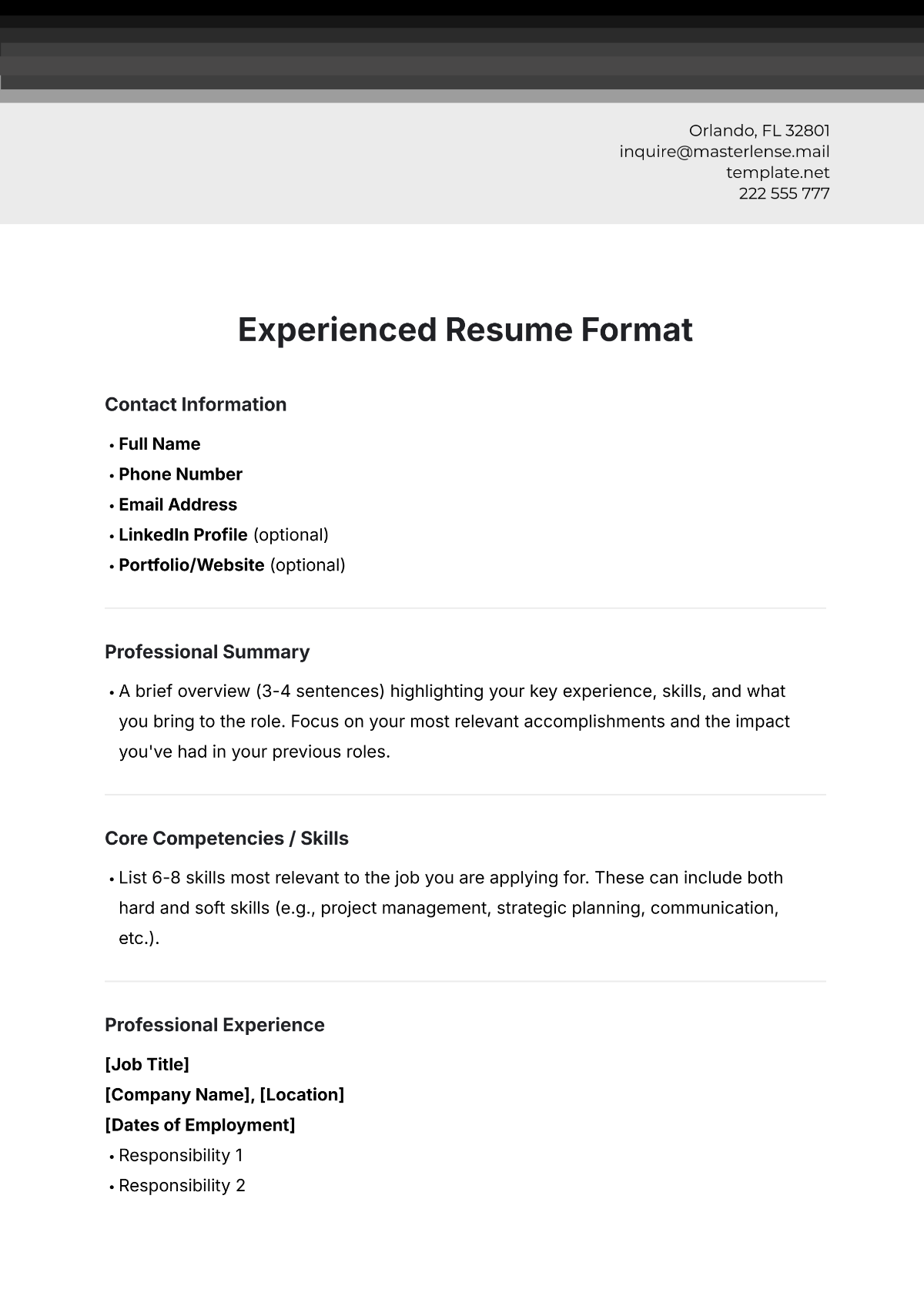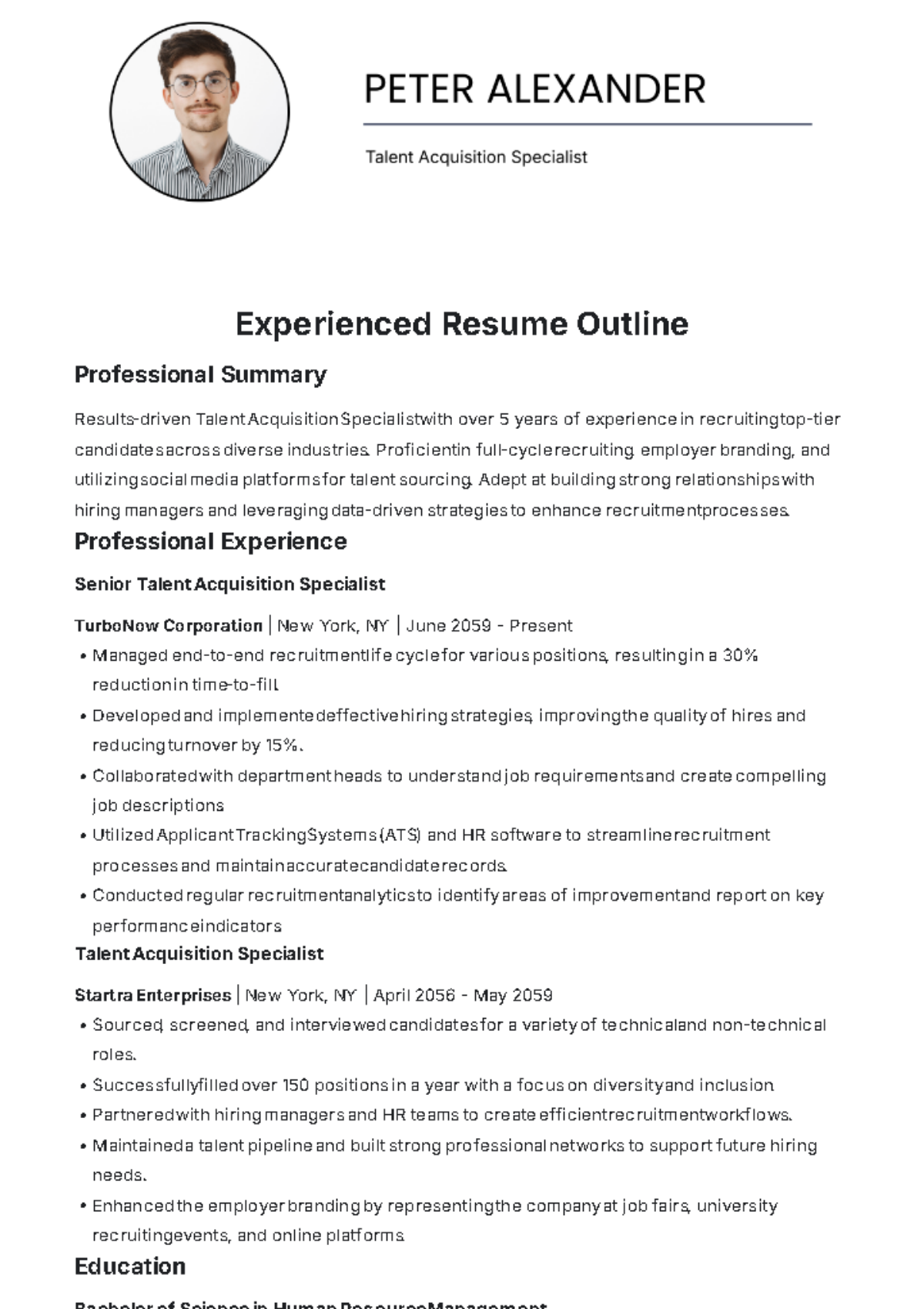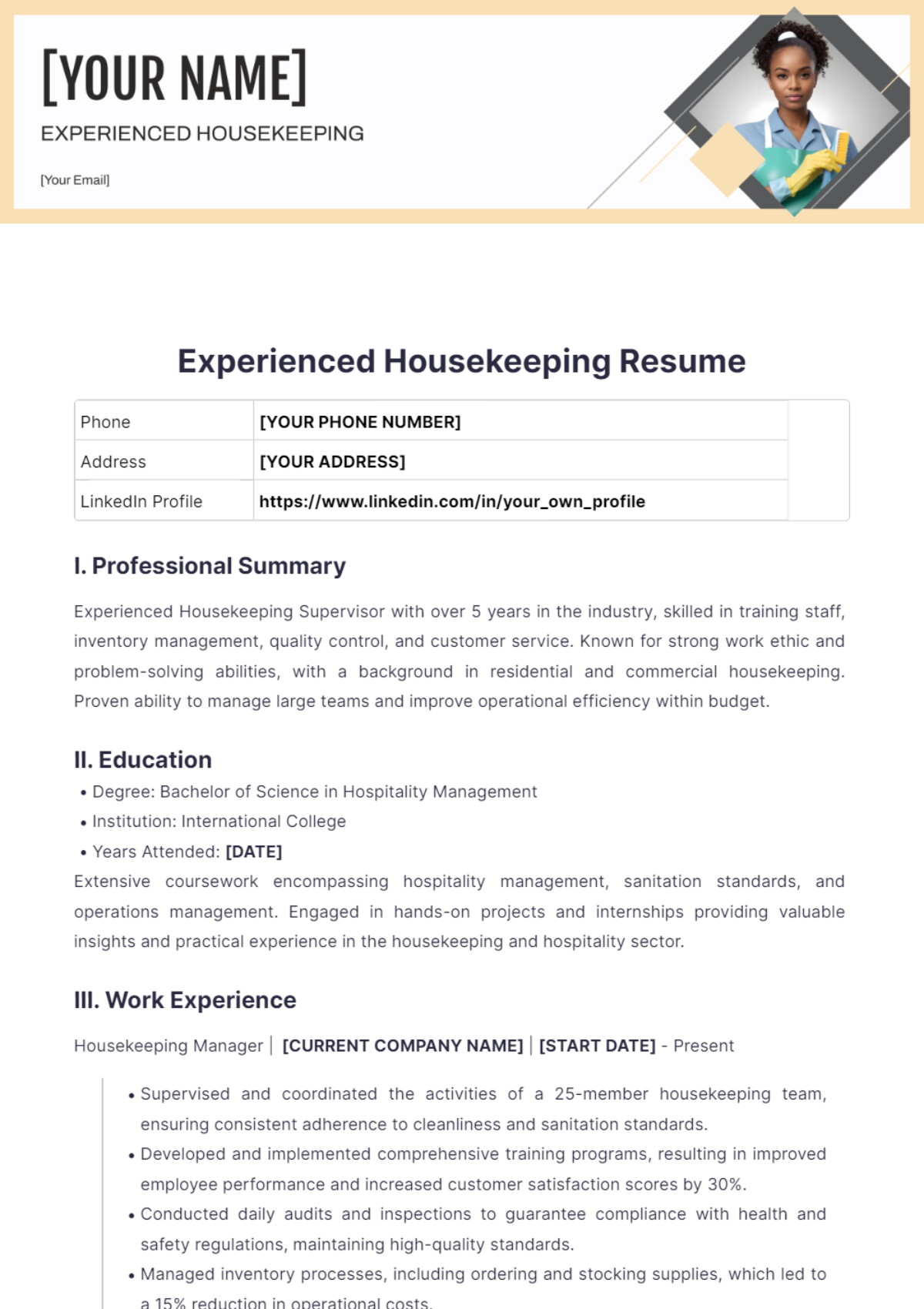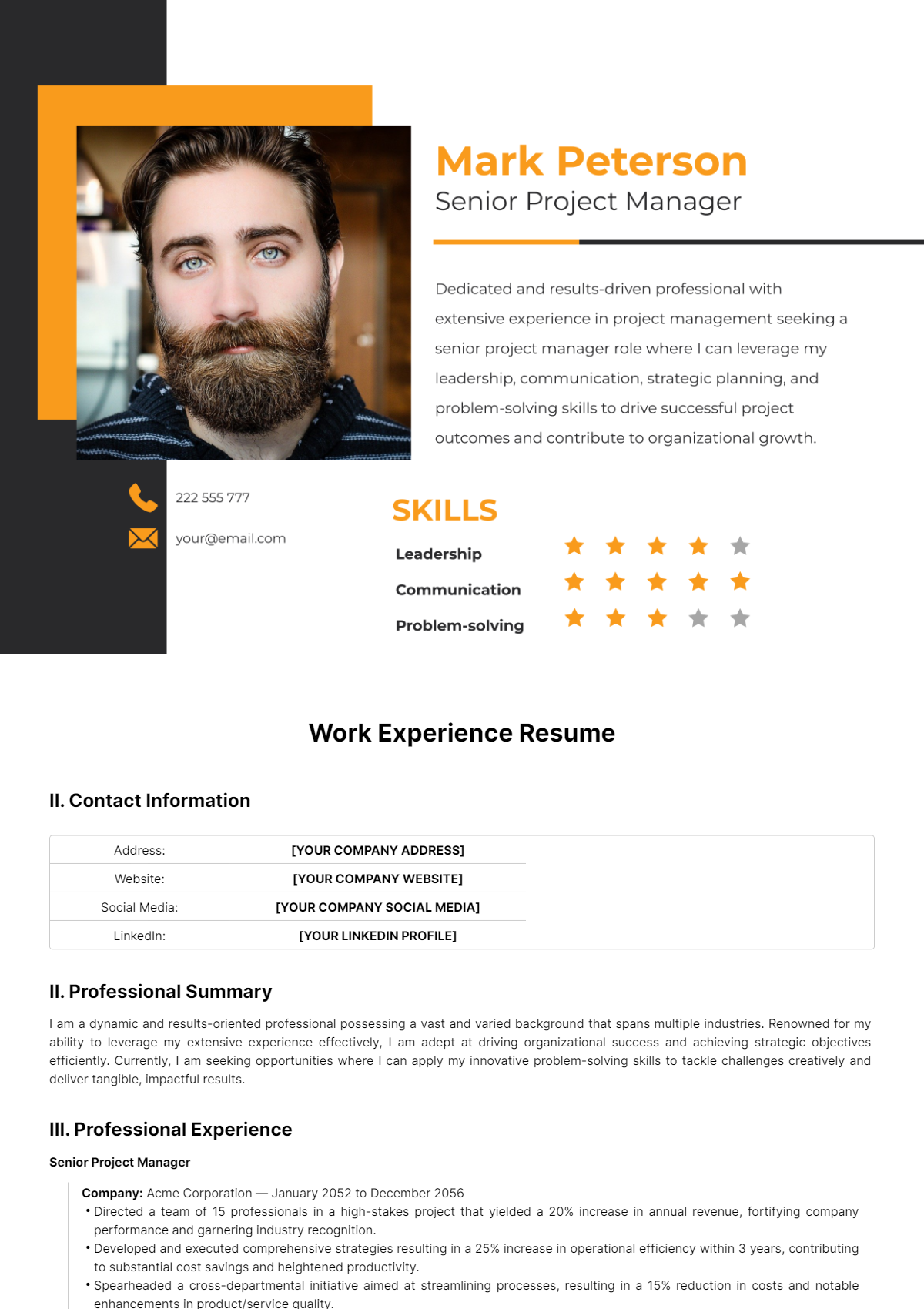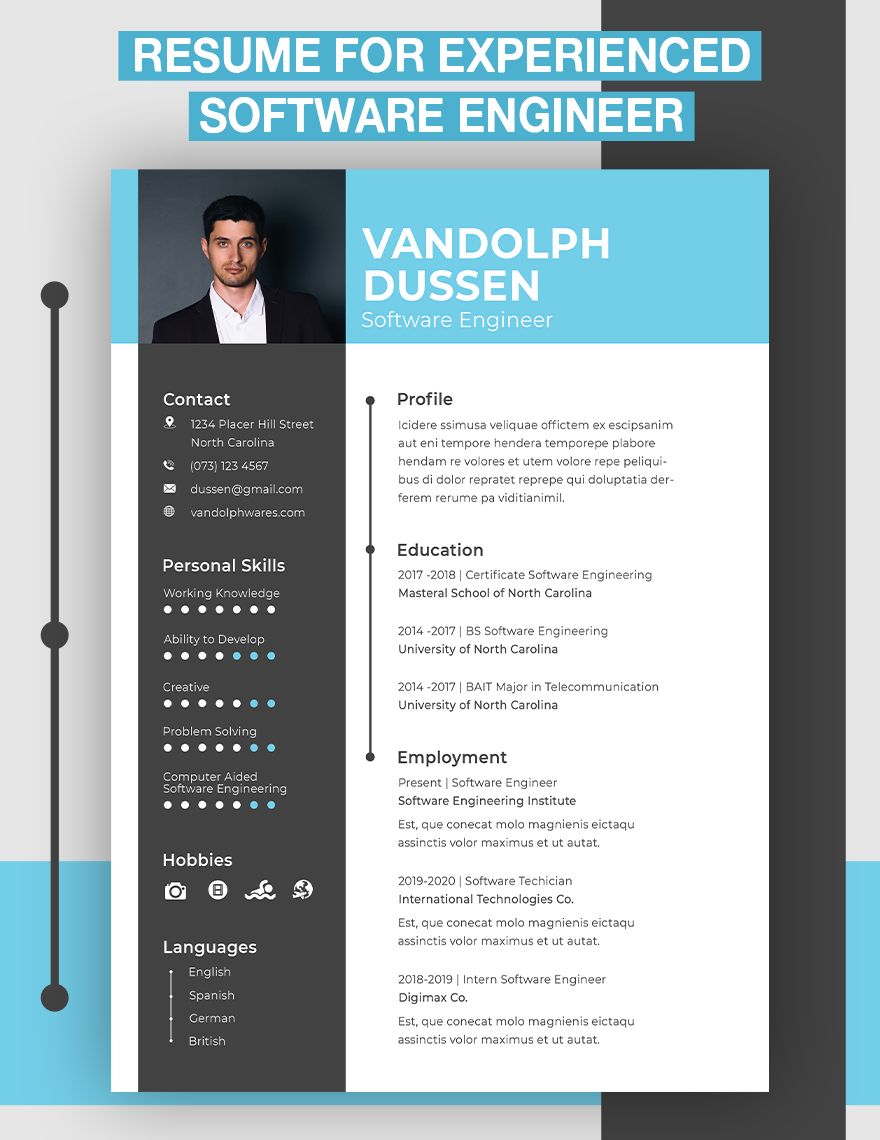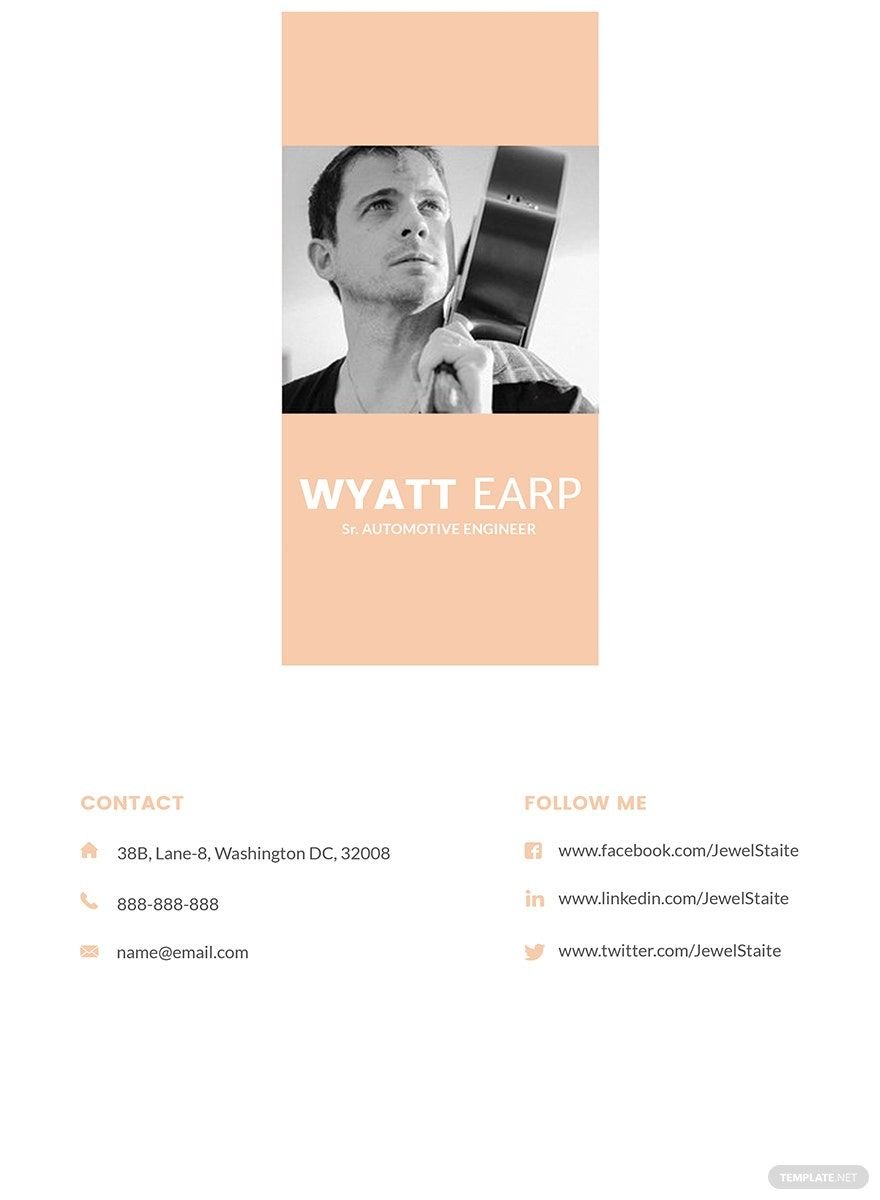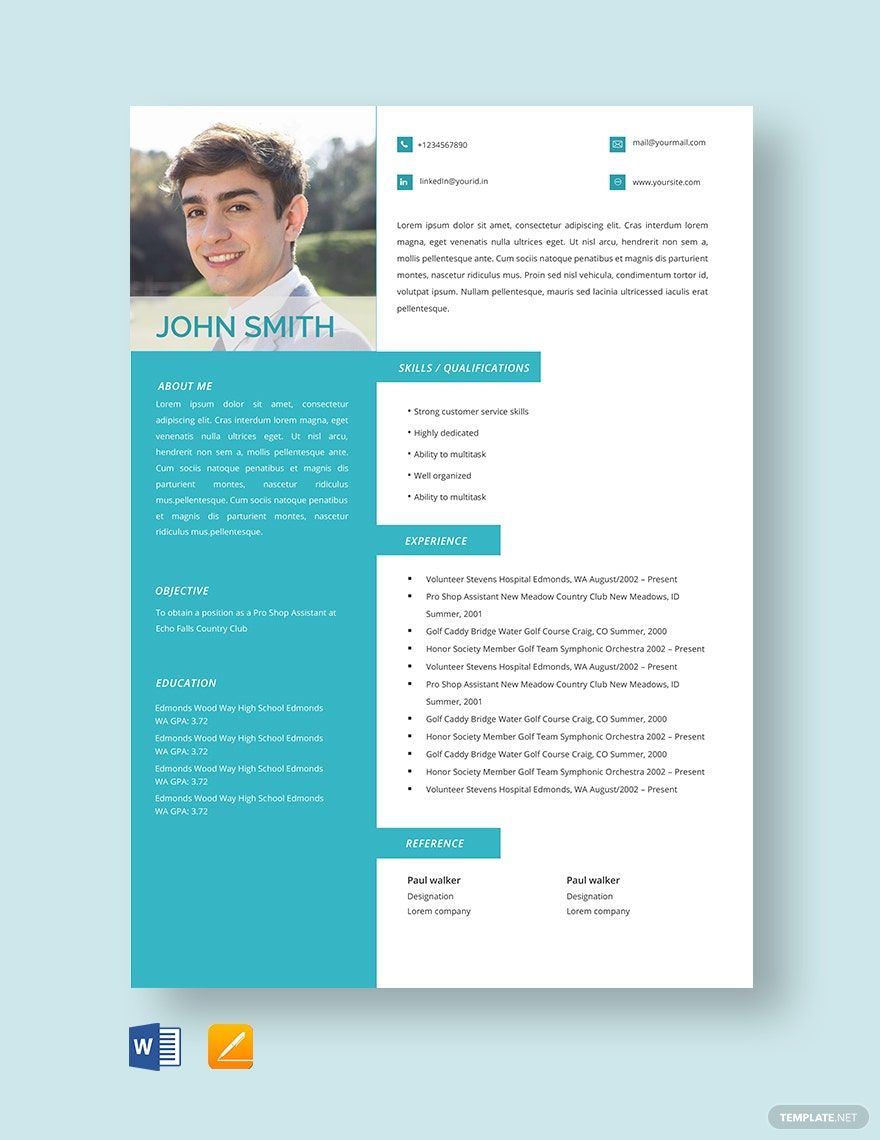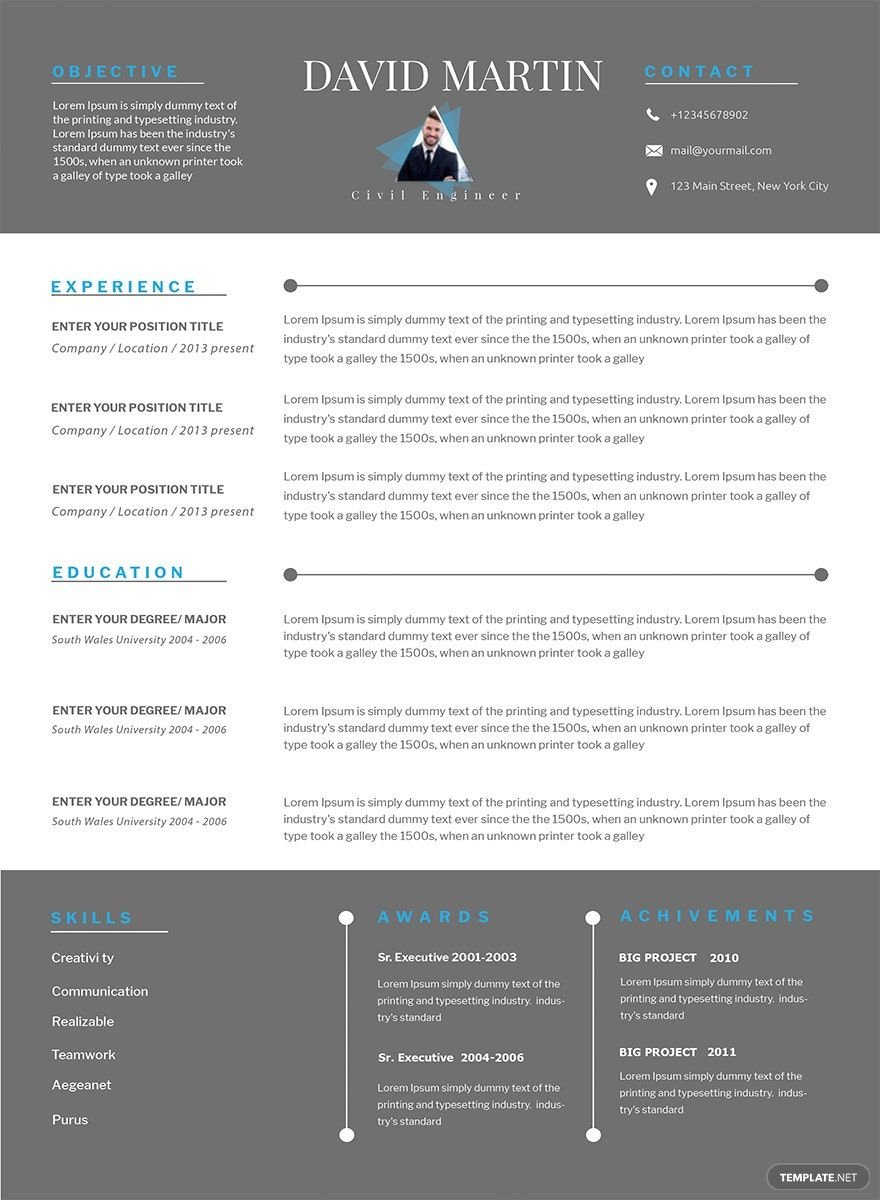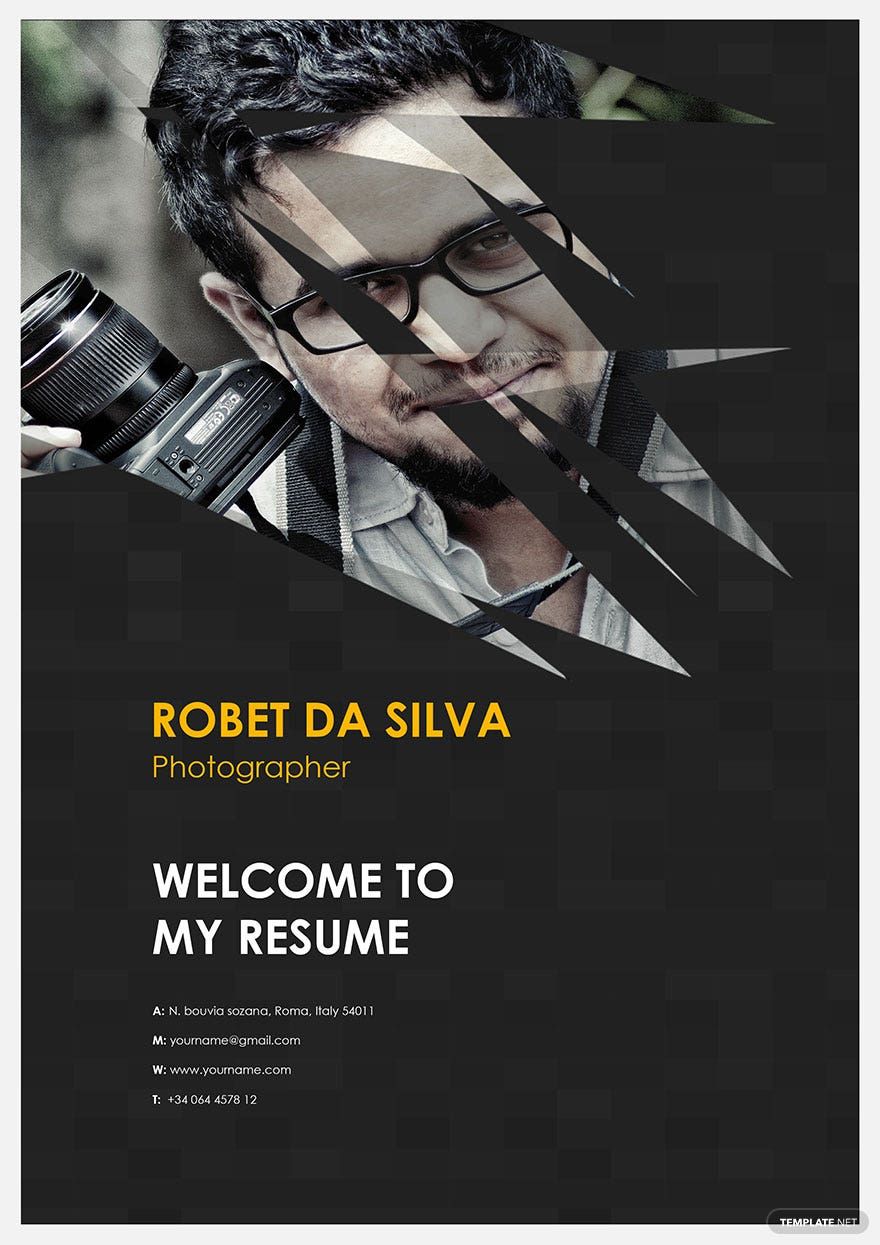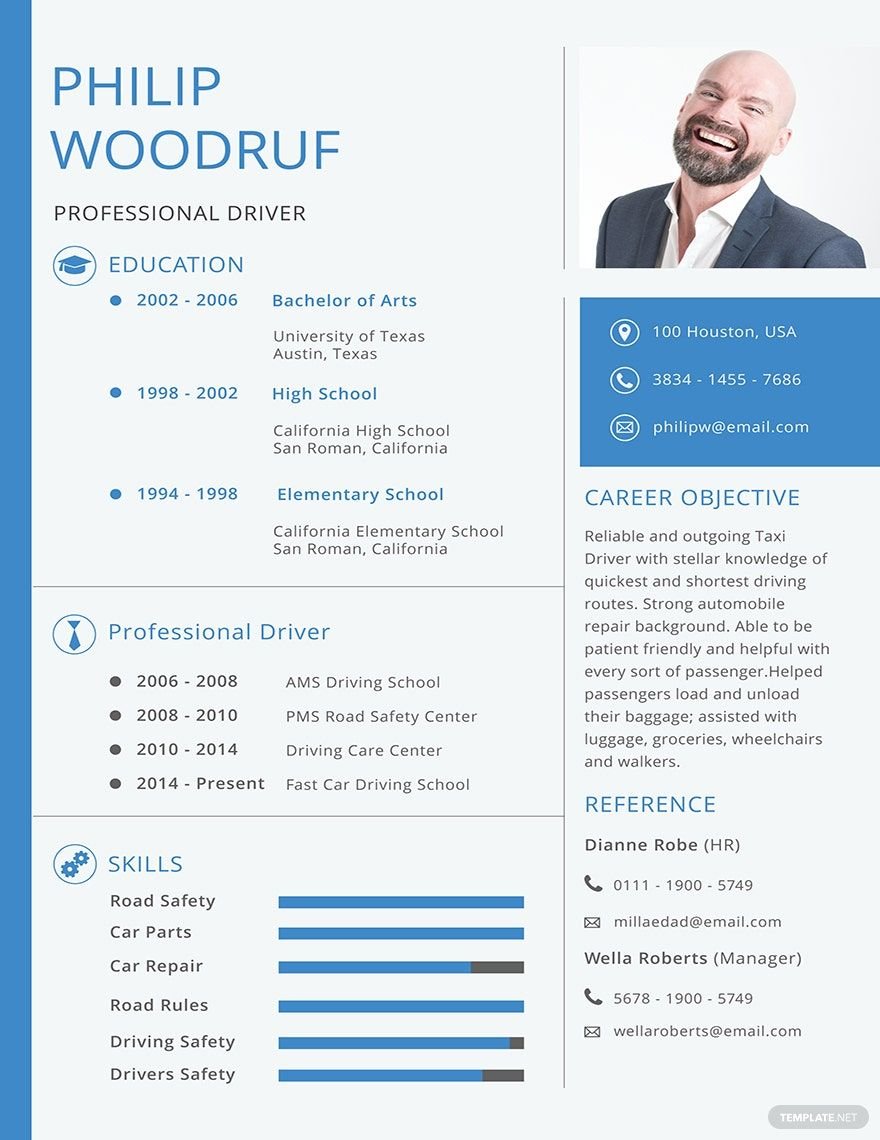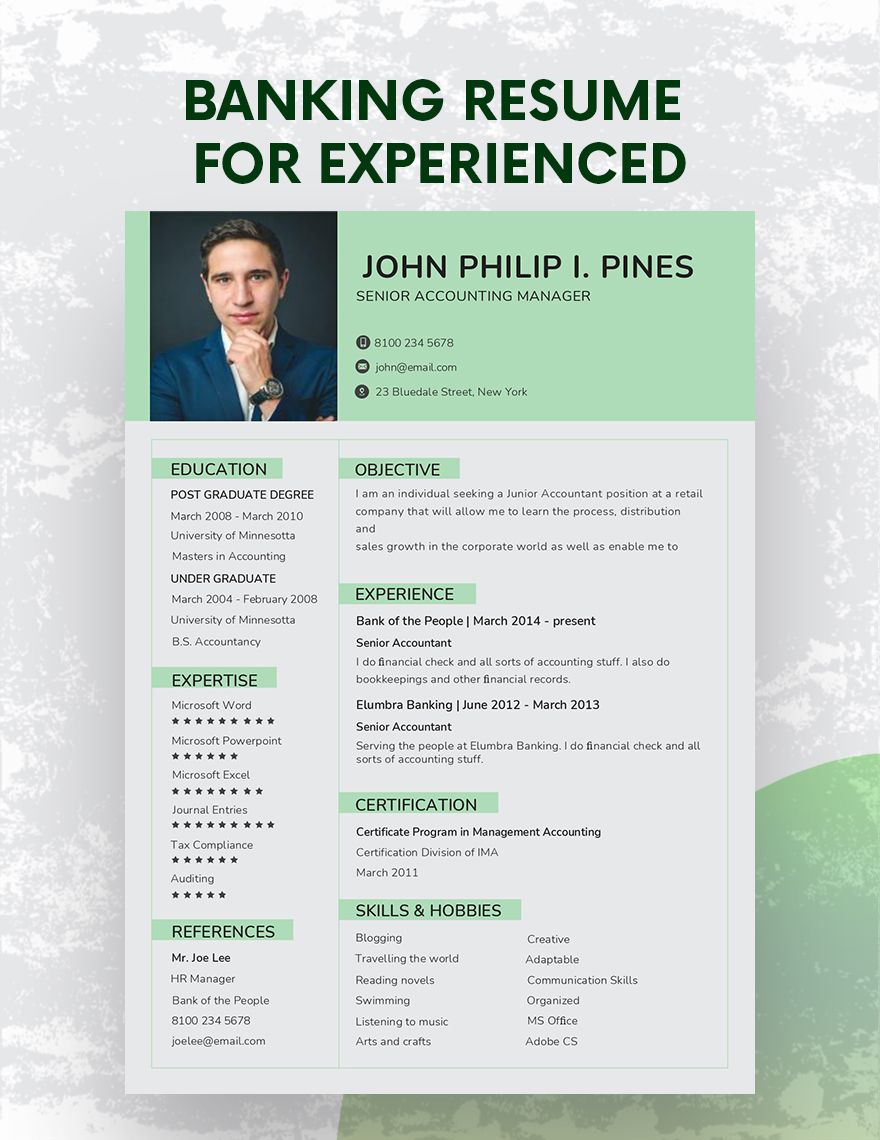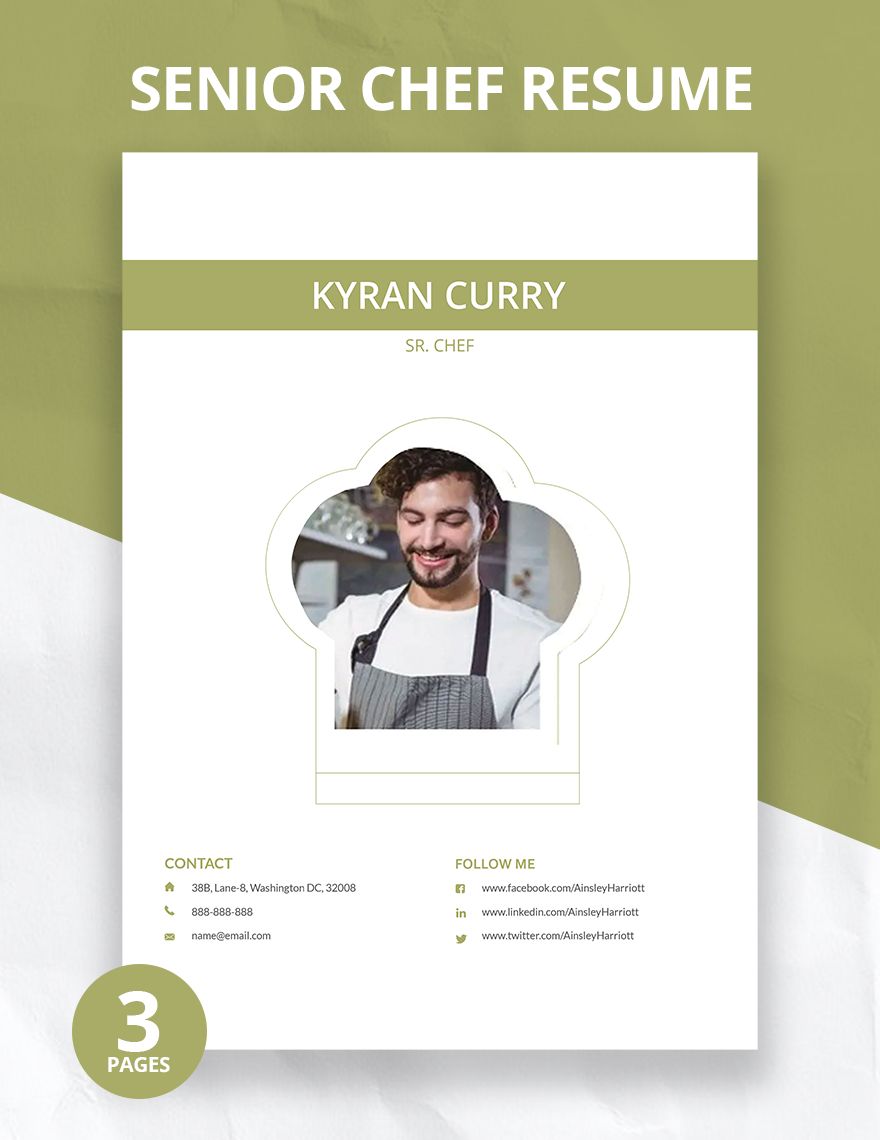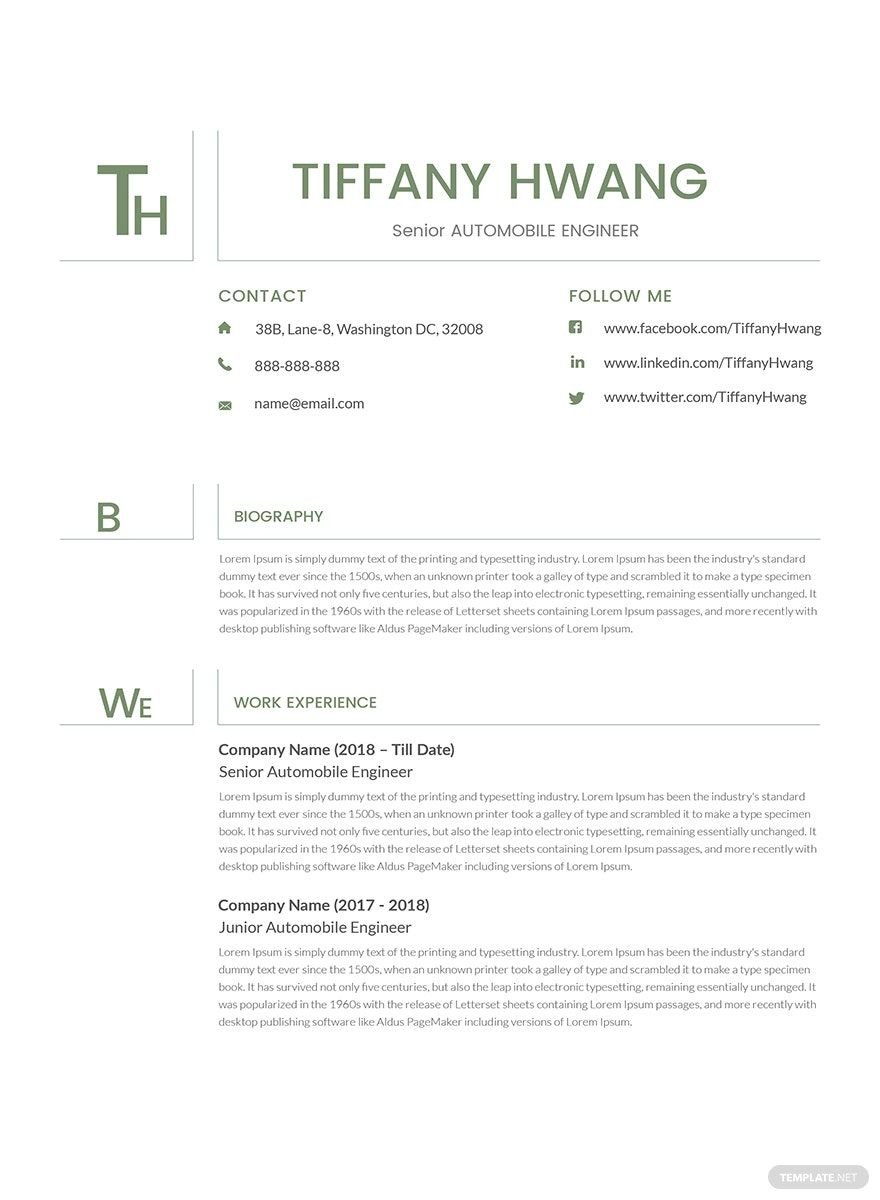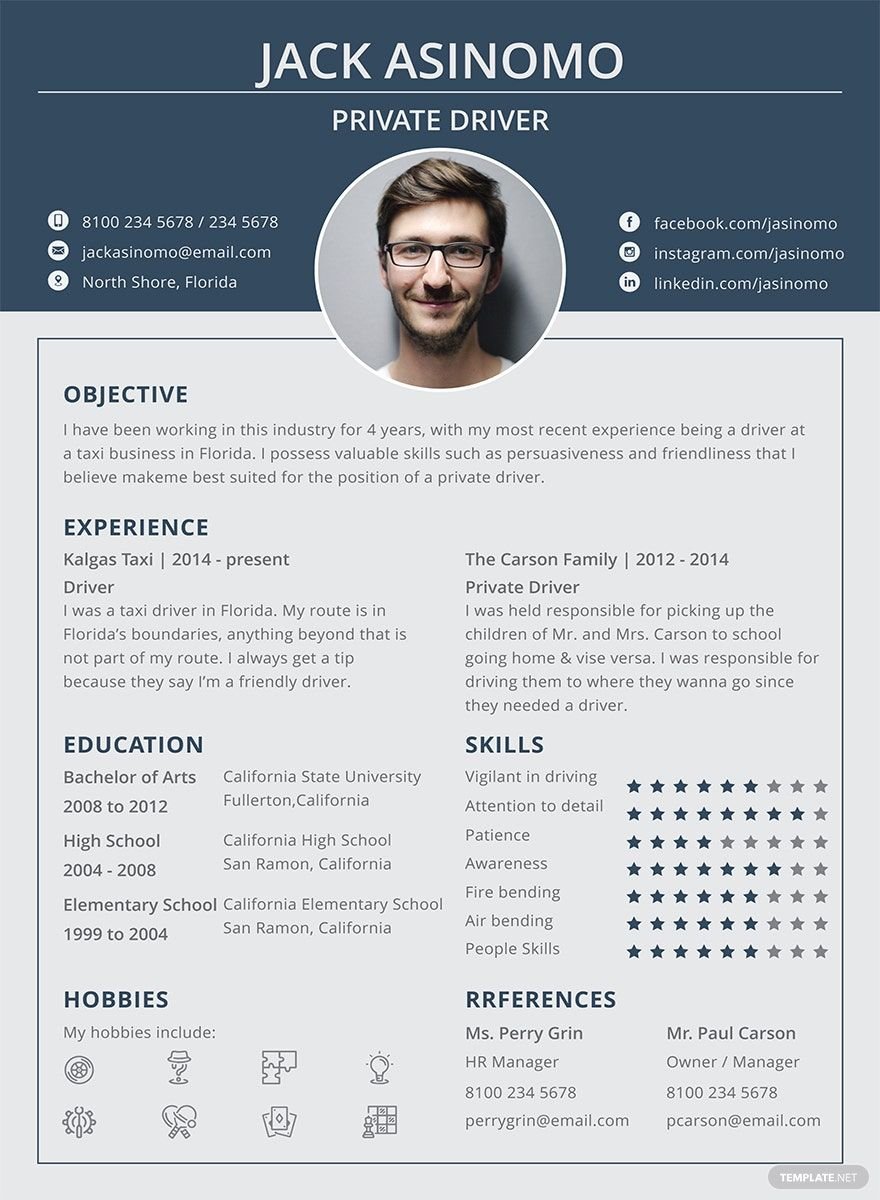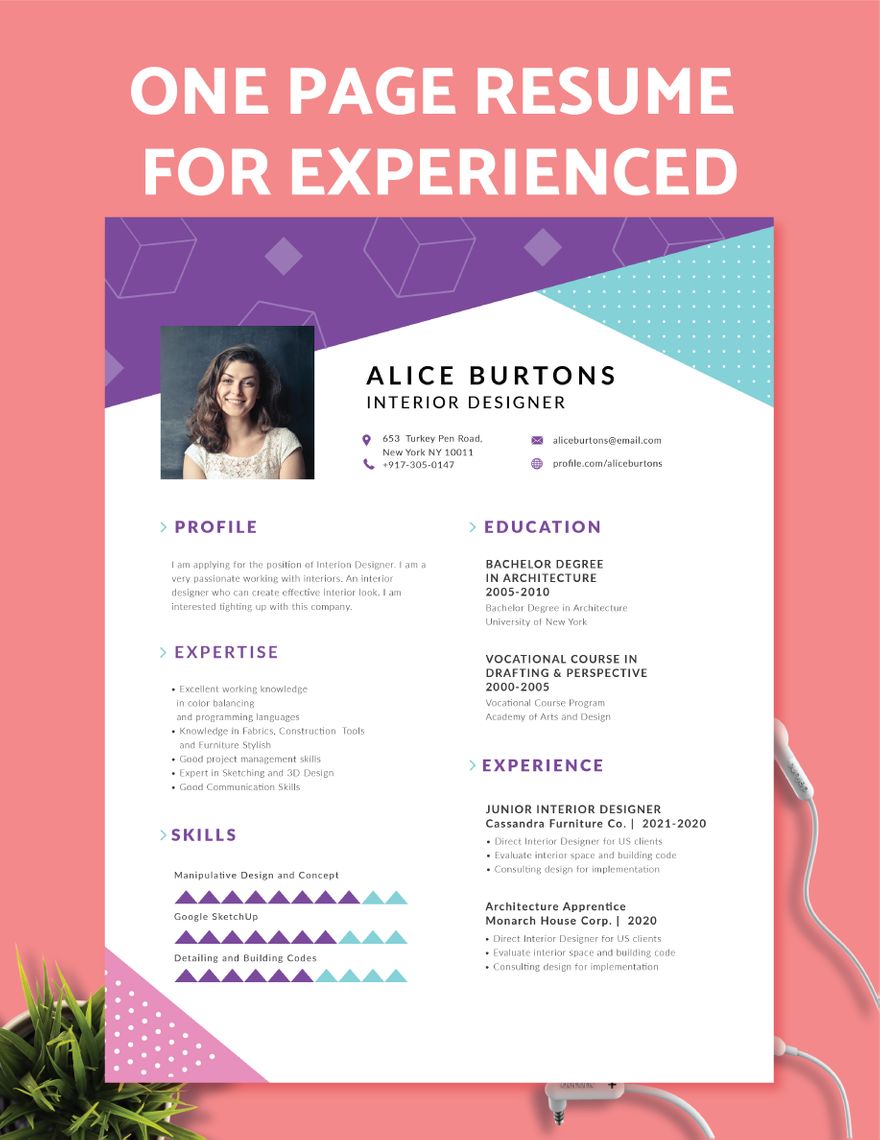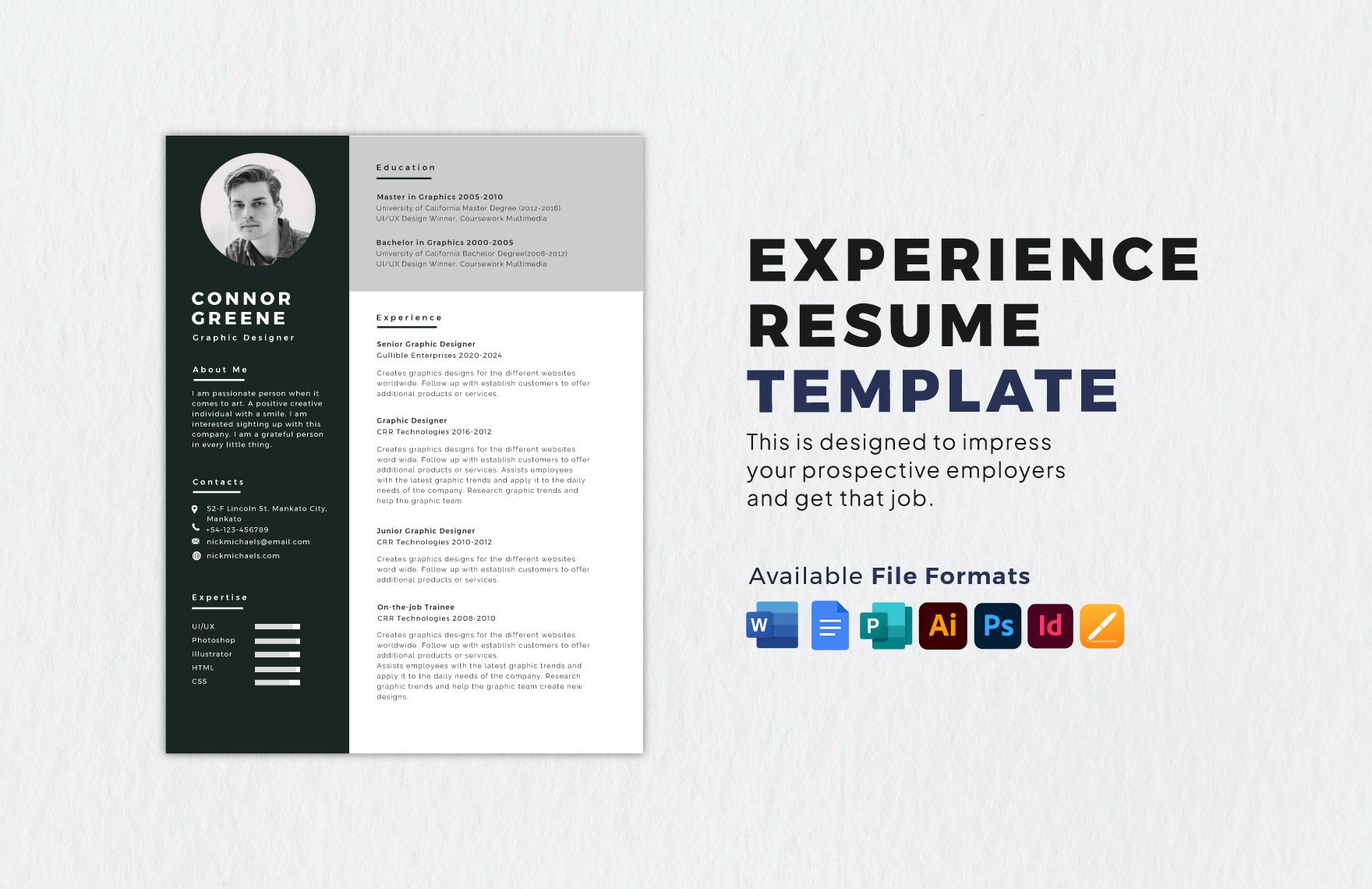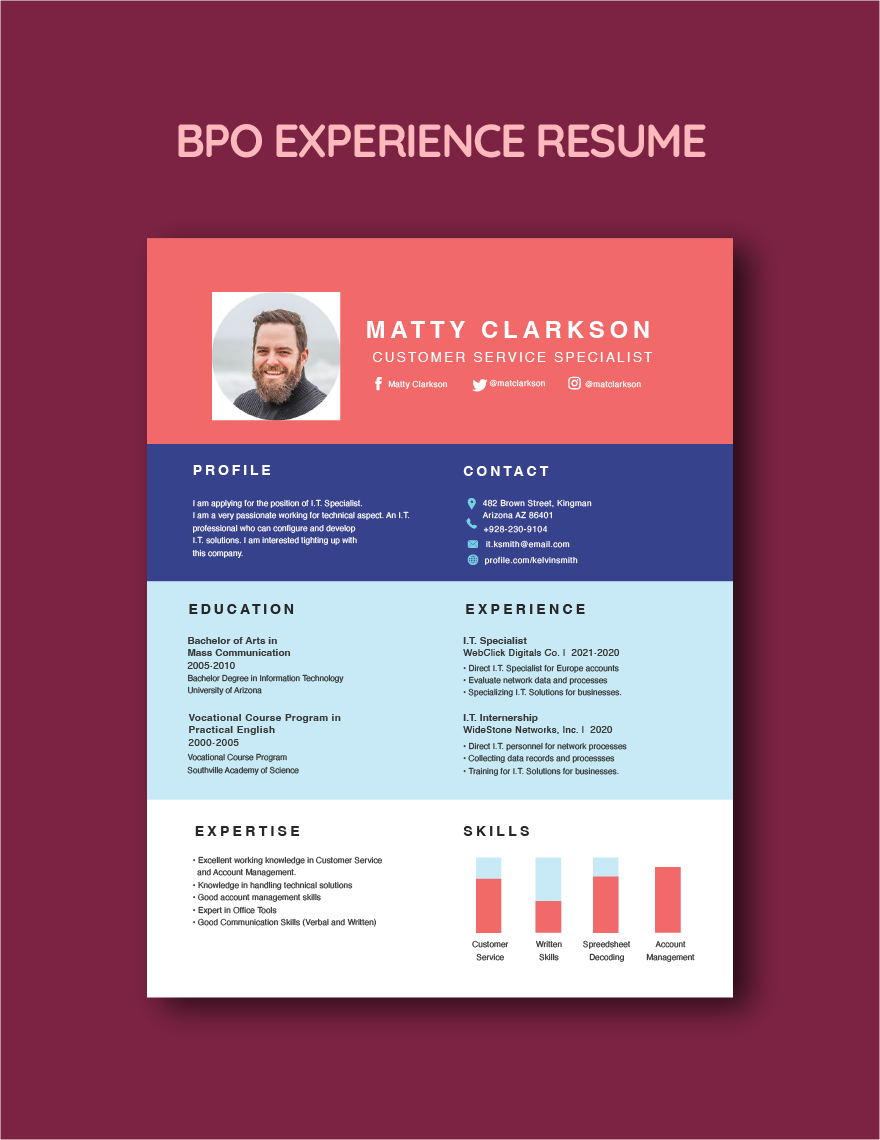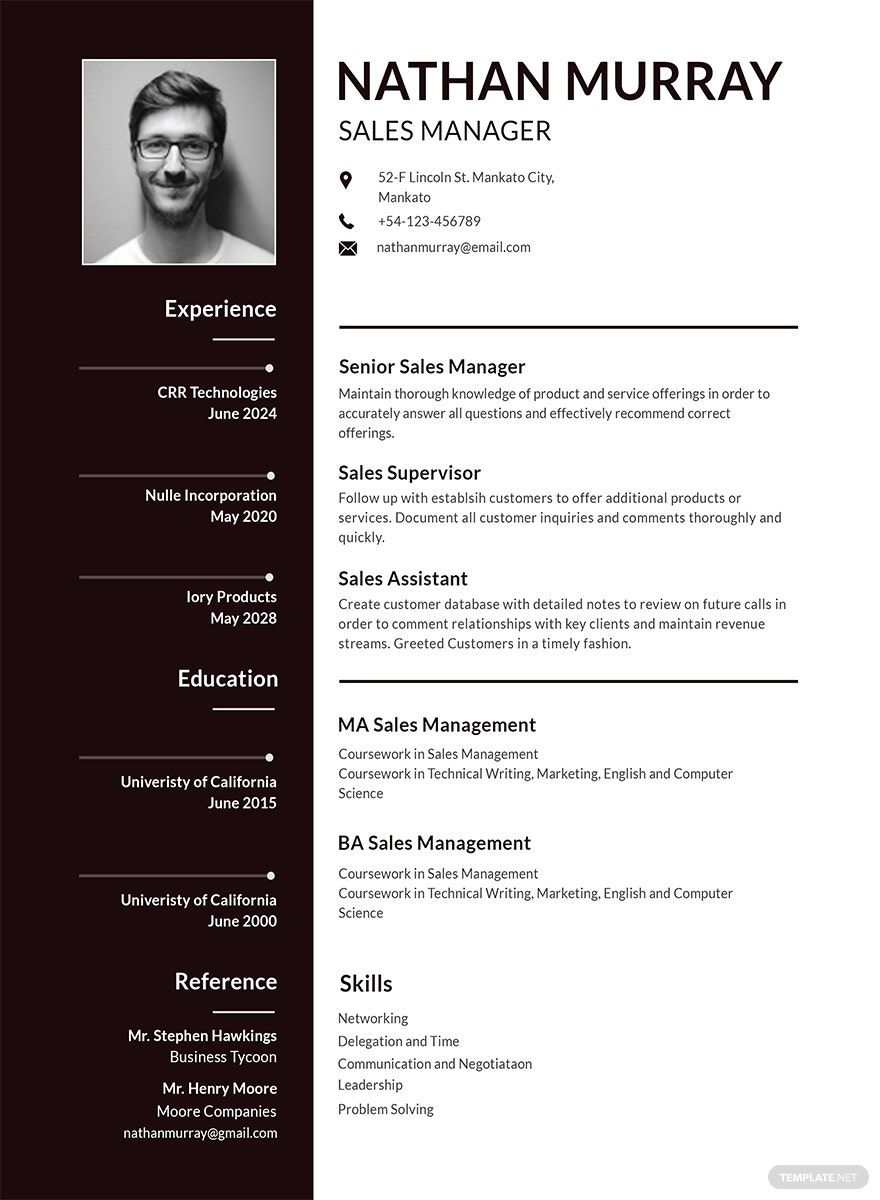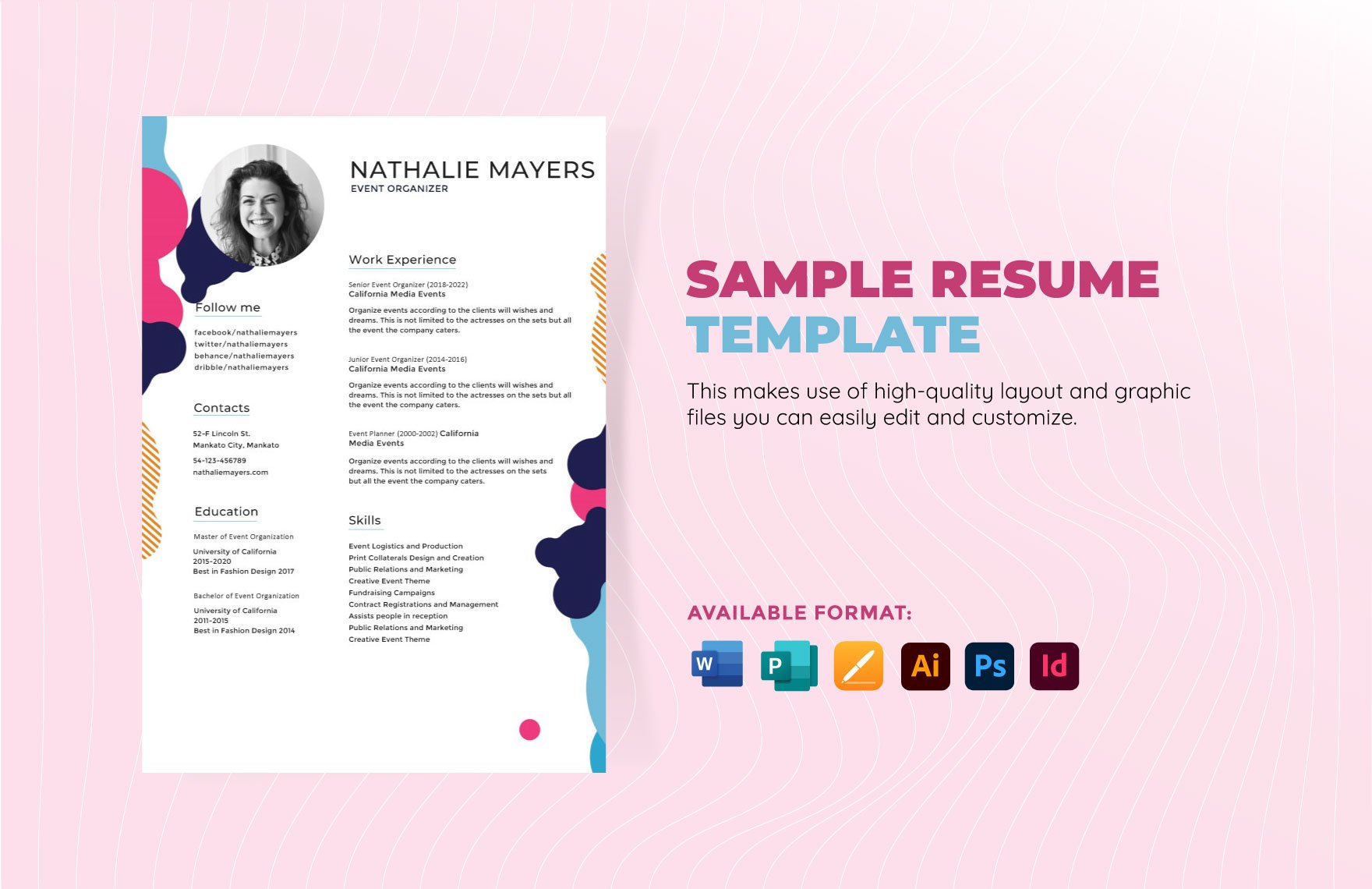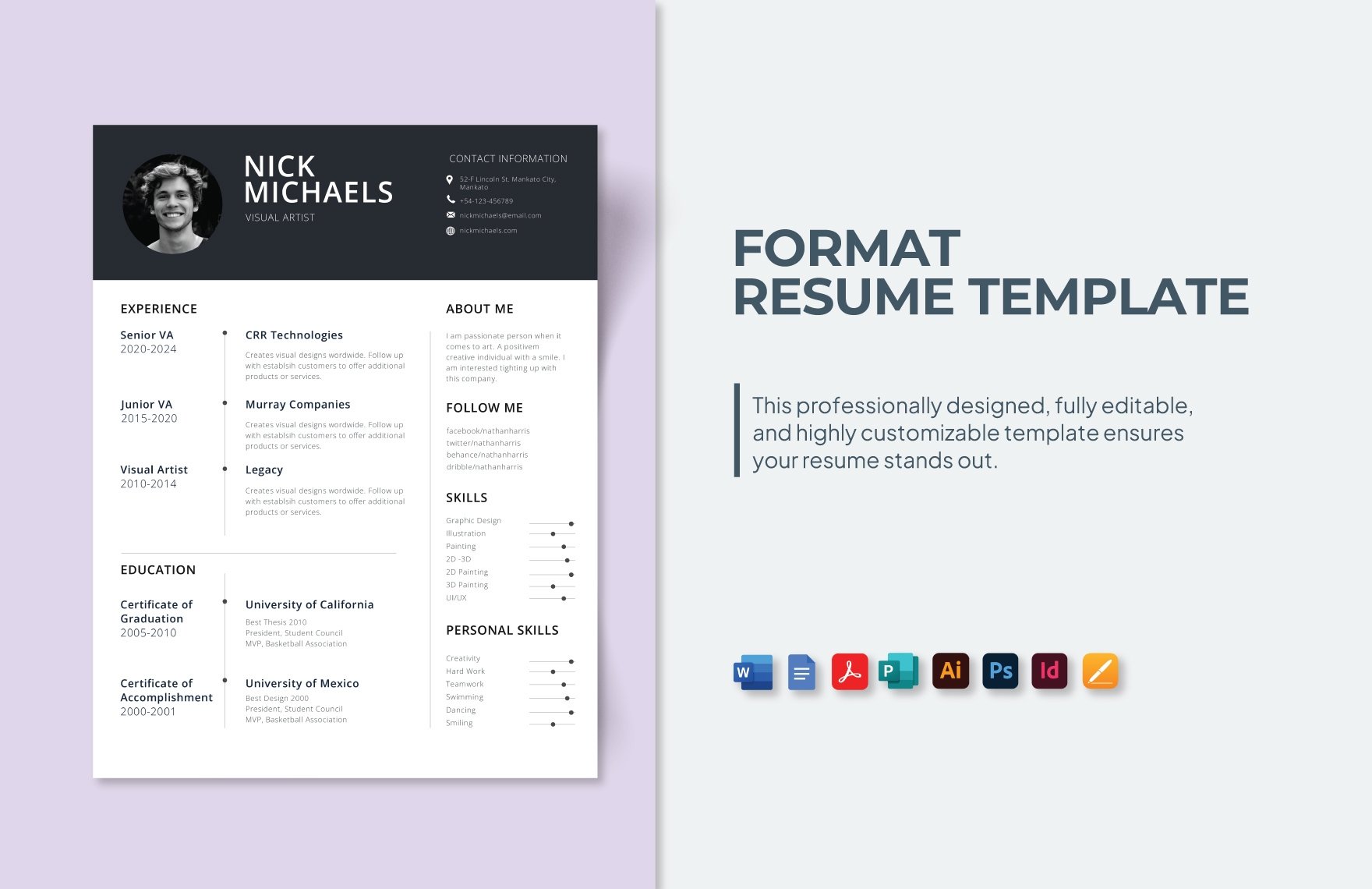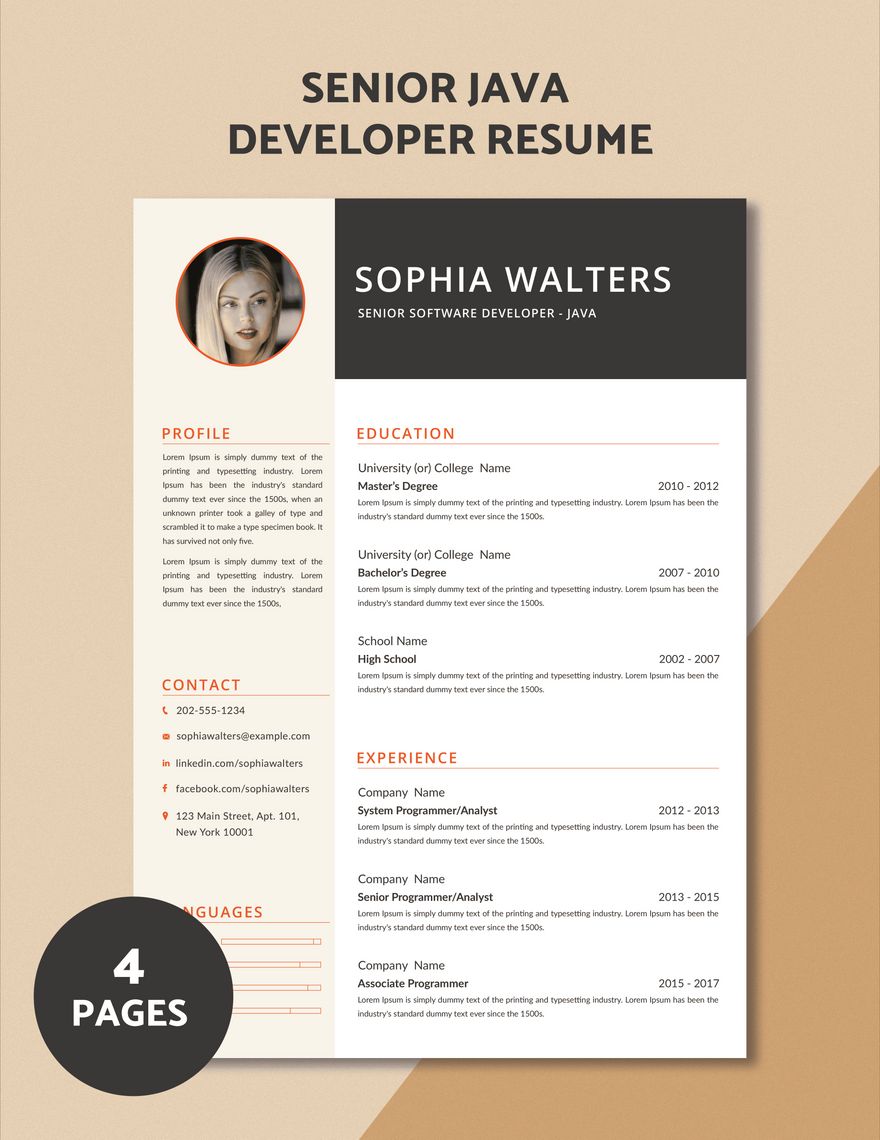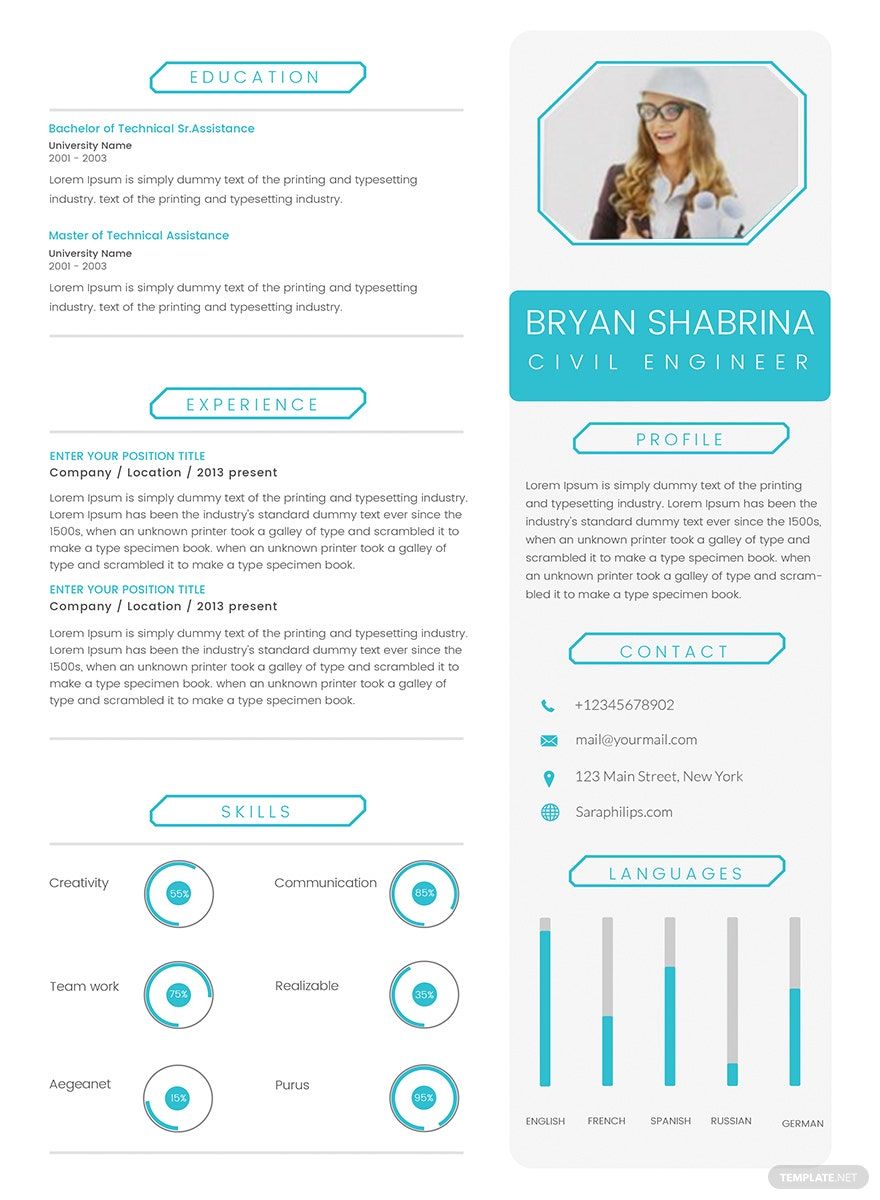Bring Your Professional Story to Life with Experience Resume Templates from Template.net
Keep your job hunt stress-free, career-focused, and visually impressive with Experience Resume Templates designed by Template.net. These templates are perfect for job seekers aiming to capture the attention of potential employers effectively. Showcase your achievements or promote your unique skills effortlessly with these professional-grade templates. Whether you’re emailing potential employers or providing handouts for job fairs, including personal contact information is a breeze. No prior design skills are required with our intuitive layout, making the process seamless and time-saving, and the best part is, these templates offer a professional-grade finish without costing a cent.
Discover the many resume templates we have on hand at Template.net. Choose a design that best suits your field, then effortlessly switch up images, swap in your own experiences, and refine the palette to perfectly match your personal brand. You can also experiment with dragging and dropping icons or graphics, and even sprinkle in some animated effects for a dynamic presentation. Thanks to the simplicity of our platform, the opportunities for personalization are endless and require no design prowess. Our collection boasts regularly updated templates, ensuring that there are always fresh and innovative designs for you to try. When you finish, easily download your resume or share it via a link or email - perfect for showcasing your credentials across multiple channels or collaborating in real time with mentors and peers.
